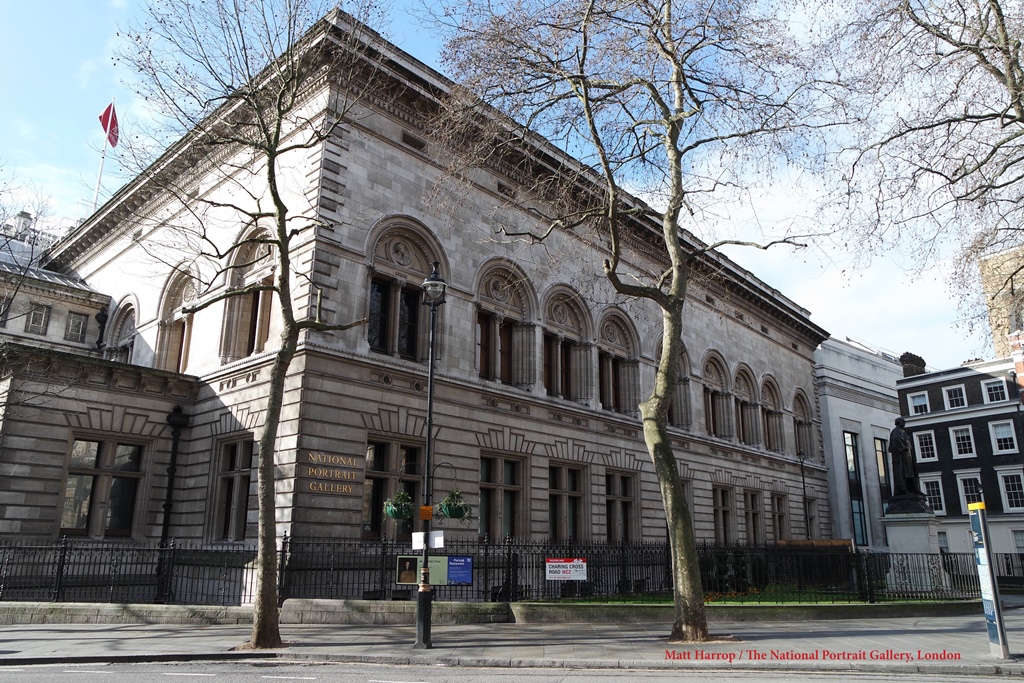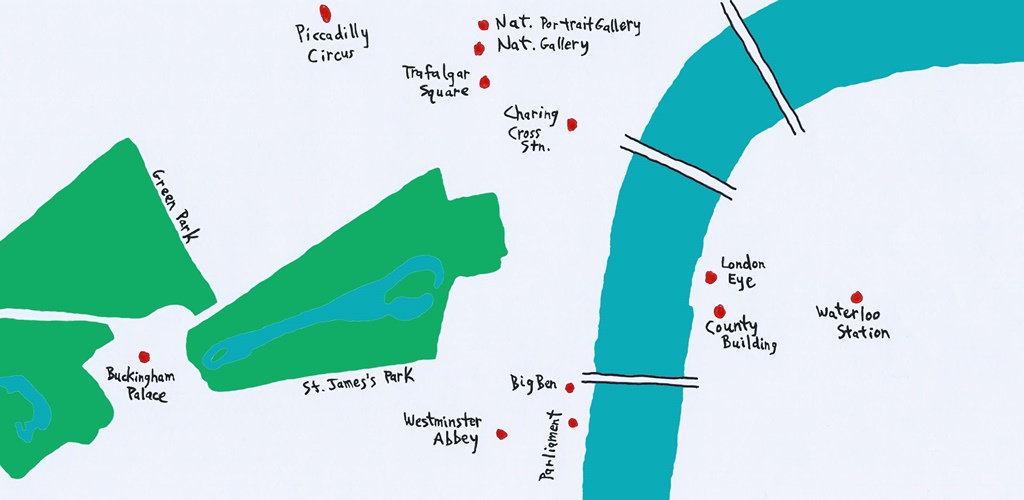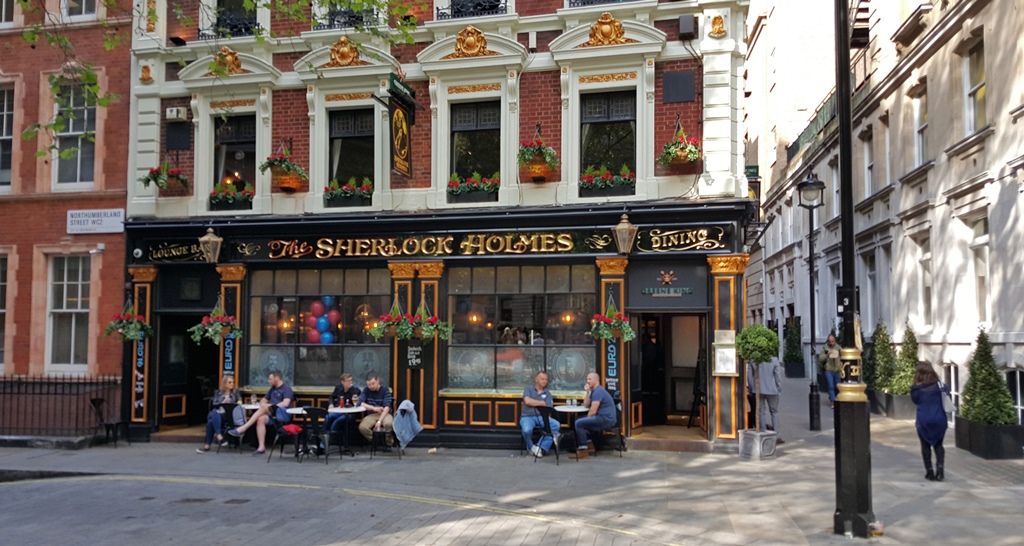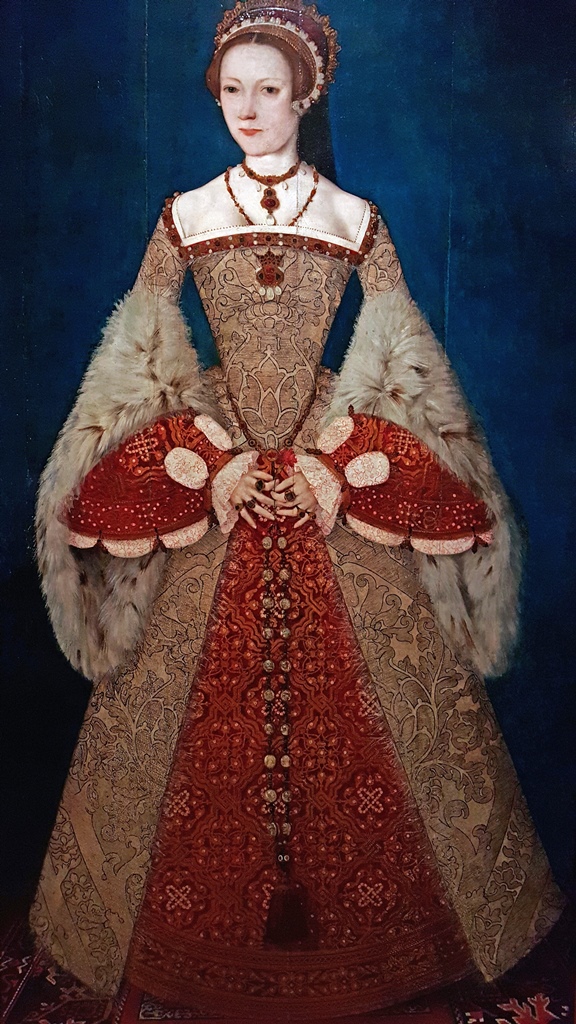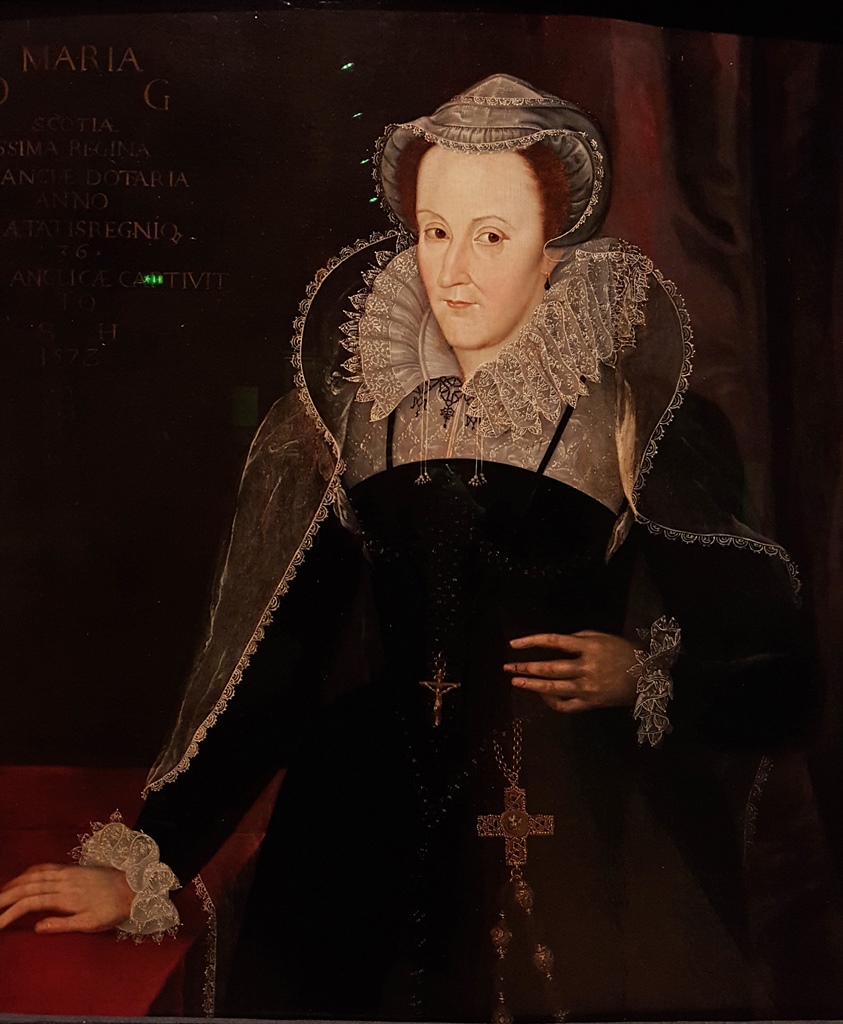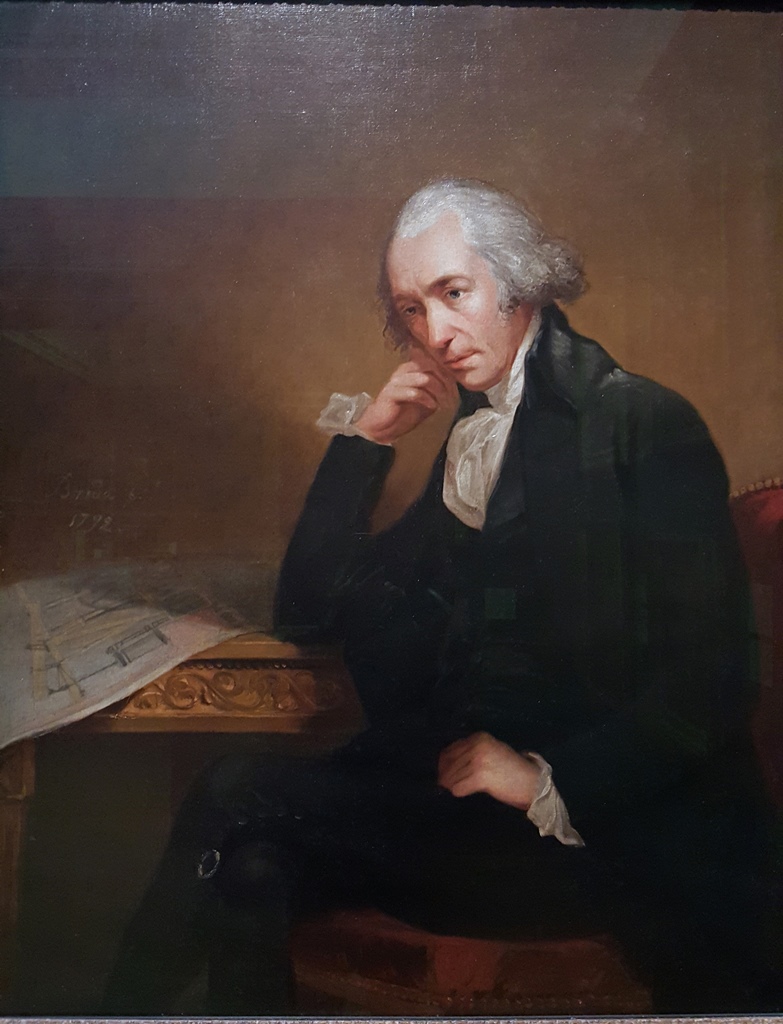National Portrait Gallery
London's National Portrait Gallery first opened
in 1856, at which time it was the first portrait gallery in the world. Its collection
(of portraits, duh) was and continues to be selected primarily based on the notoriety
of the subjects depicted in the paintings. To be sure, many prestigious artists are
represented, but many of the works were produced by lesser-known artists, or by
artists who are entirely unknown. The subjects in the paintings were (and sometimes
are) all British, at least for a significant portion of their lives.
The gallery is located in the City of Westminster, just off Trafalgar Square and adjacent
to the National Gallery (which has all kinds of paintings and will be covered in a future
page). This left us across the river from it when we disembarked from our Thames cruise
at the dock below the London Eye. But we were still within walking distance, thanks to
the Golden Jubilee footbridges just to the north. We naturally took the closer of the
two.
Westminster Area
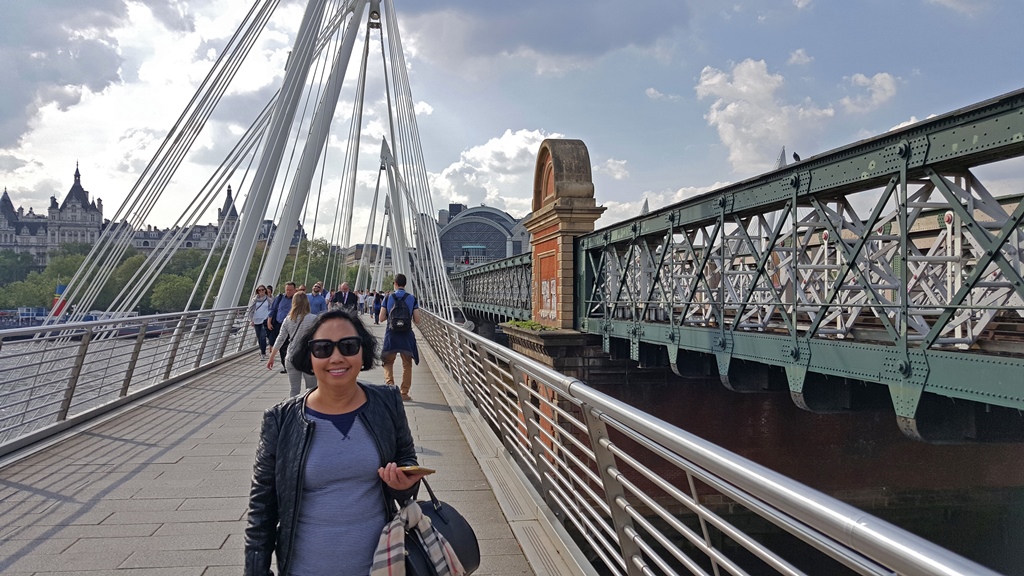
Nella on Golden Jubilee Bridge

Bob on Golden Jubilee Bridge
This took us across to the Charing Cross Railway Station, in which we had no interest at
this time. We continued past the station, taking note of an interesting-looking pub
along the way (not really anywhere near Baker Street), but again not stopping.
Sherlock Holmes Pub
This brought us to Trafalgar Square and the National Gallery (again, see a future page),
and eventually to the Portrait Gallery. You might be expecting another hefty admission
charge at this point, but in one of London's charming inconsistencies, we found
admission to the National Portrait Gallery to be free. And photography was totally OK
(no flash or tripods though).
The gallery, of course, is full of paintings (and some sculptures) of famous historical
British people (and a few who are still alive). I for one found it interesting to see
the faces that went with some of the many historical names I'd heard or read over the
years. I'll show you portraits of some of the people I'm somewhat familiar with, but
I'm not going to write very much about them – not because there's nothing to write,
but because there's too much to write. I'd never finish writing this page (and you'd
never finish reading it). But I'll divide them into approximate categories, and sort
them roughly chronologically within the categories, to impose some kind of order on
them. The first category is one you have to think of when you think about British
history – royalty:
-
Richard III (1452-85) – last ruler of Plantagenet dynasty and House of York, died
in last decisive battle of Wars of the Roses; thought by some to have "disappeared"
two nephews to become king
-
Henry VII (1485-1509) – defeated Richard III to become first monarch of House of
Tudor
-
Henry VIII (1491-1547) – broke with the Catholic church, making himself head of
Church of England and dissolving monasteries; married six times, had two wives
beheaded; banished or executed out-of-favor advisors; big spender, started lots
of wars
-
Henry VIII and Henry VII – this is a "cartoon" – a preparatory paper drawing for
a wall painting which was completed in Whitehall Palace in 1537; the painting was
destroyed in a fire in 1698
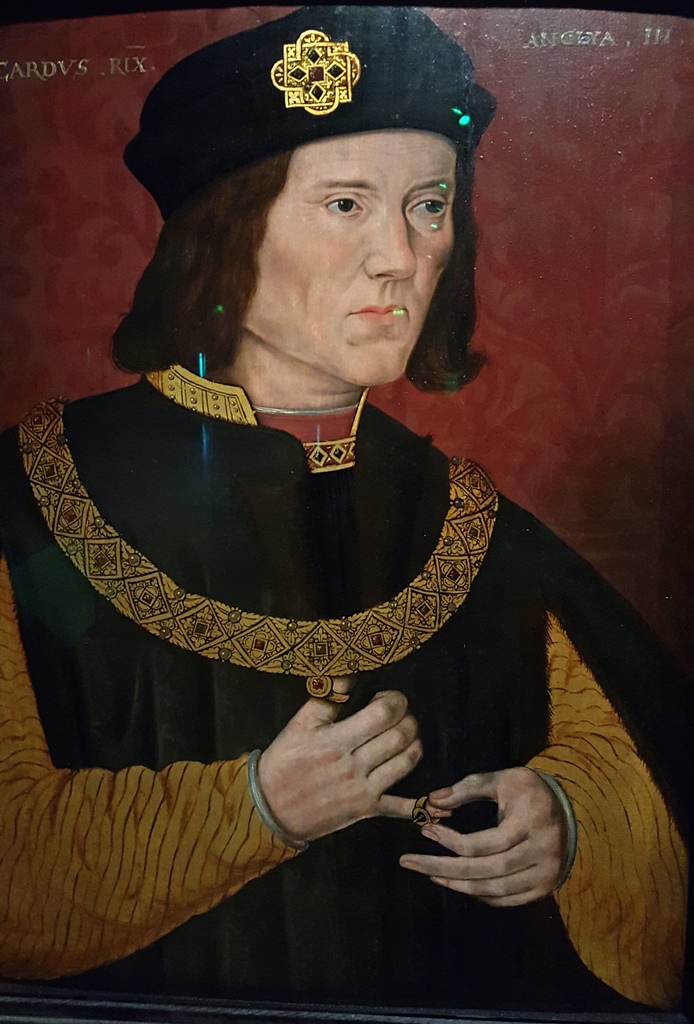
Richard III
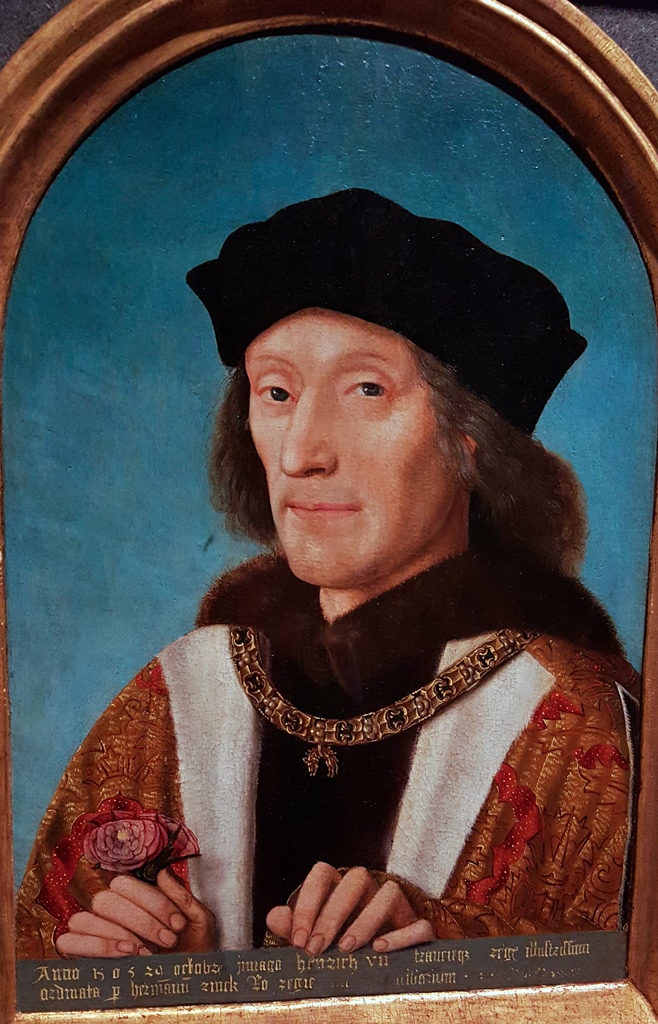
Henry VII (1505)
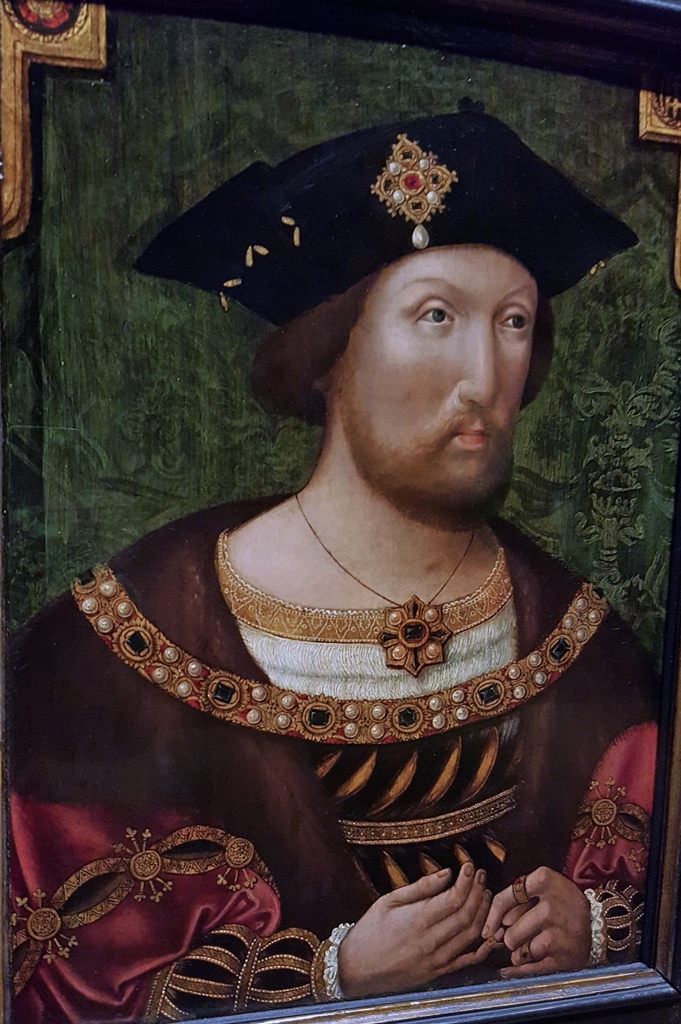
Henry VIII (ca. 1520)
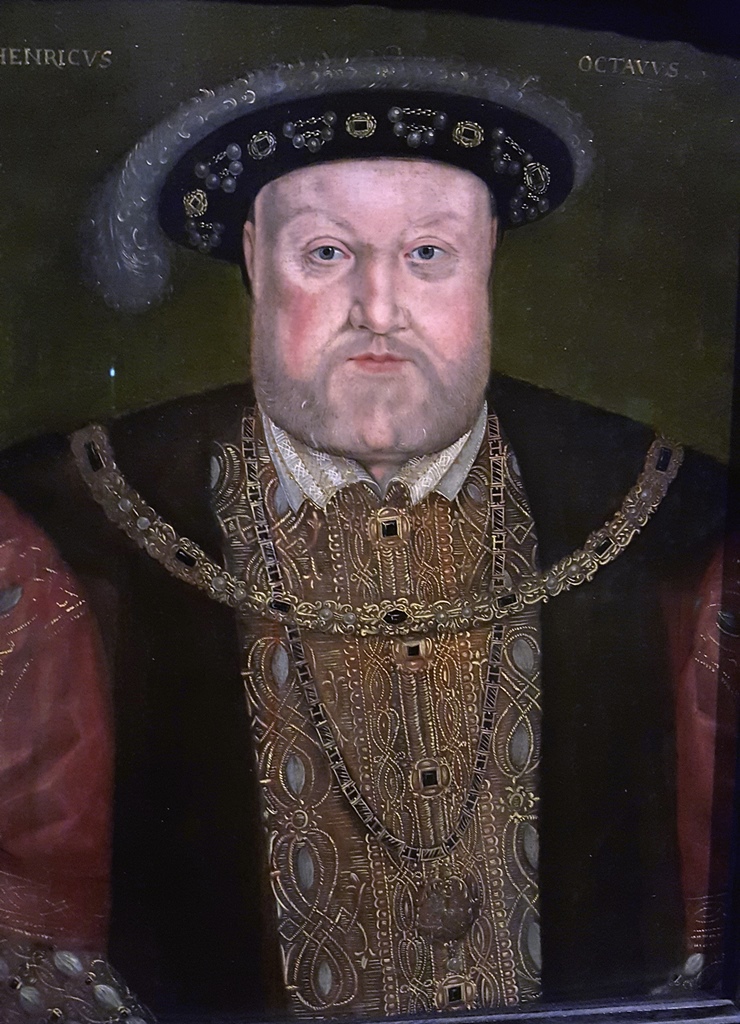
Henry VIII
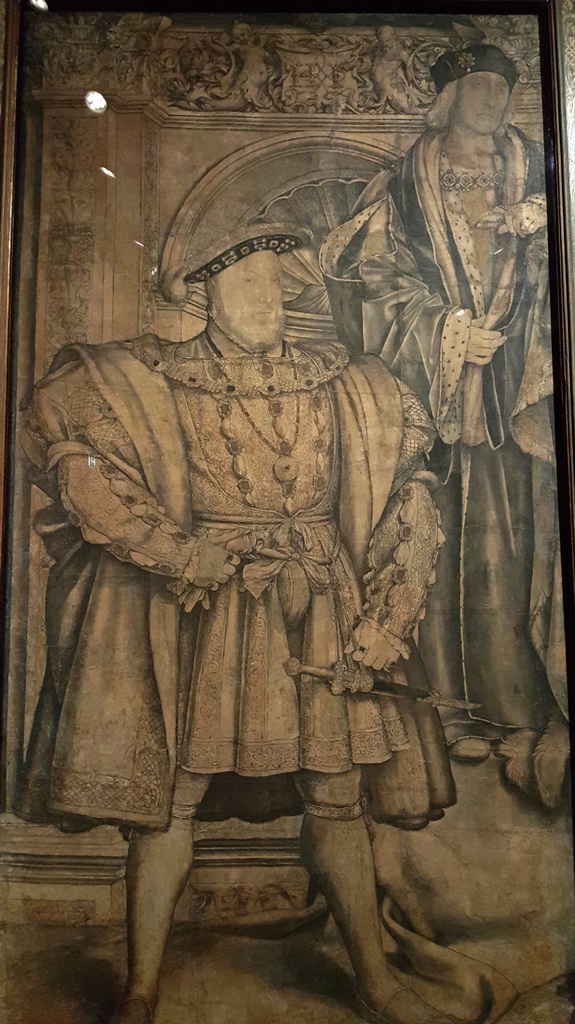
Henry VIII and Henry VII (cartoon), Hans Holbein the Younger (1537)
-
Katherine of Aragon (1485-1536) – first wife of Henry VIII, daughter of Ferdinand II
of Aragon and Isabella I of Castile; formerly married to Henry's brother Arthur, who
died after 5 months; marriage annulled by Henry, triggering break with Catholic church
-
Anne Boleyn (1501-36) – second wife of Henry VIII, who annulled his first marriage so
he could marry her; unable to produce male heir, but produced future Queen Elizabeth;
accused of treason and other unconvincing charges, tried and executed
-
Katherine Parr (1512-48) – last wife of Henry VIII, last queen consort of House of Tudor
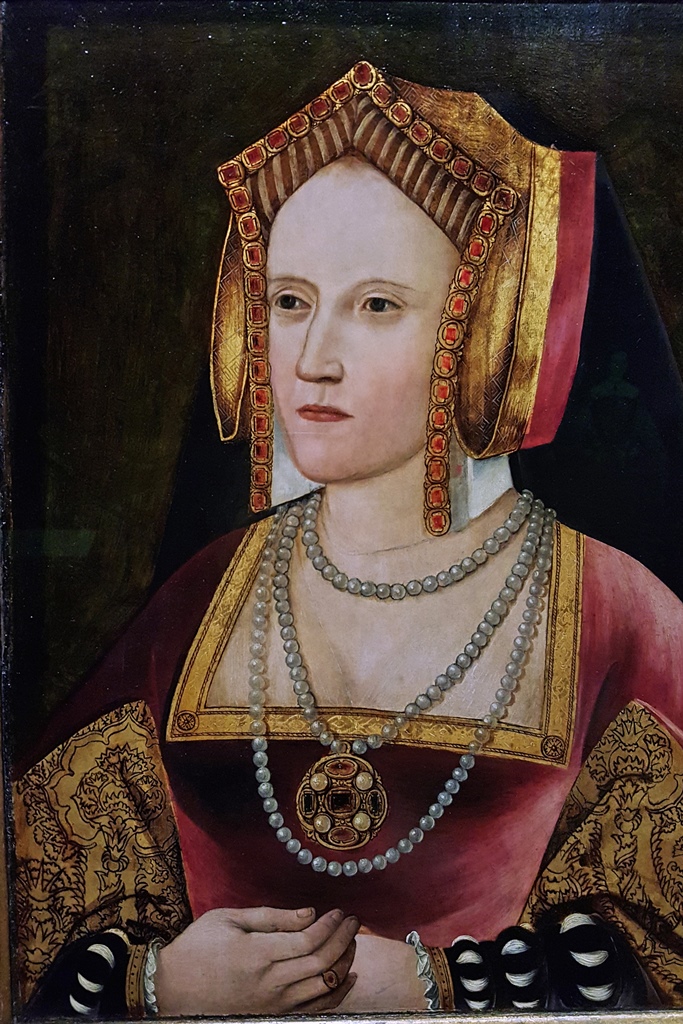
Katherine of Aragon (ca. 1520)
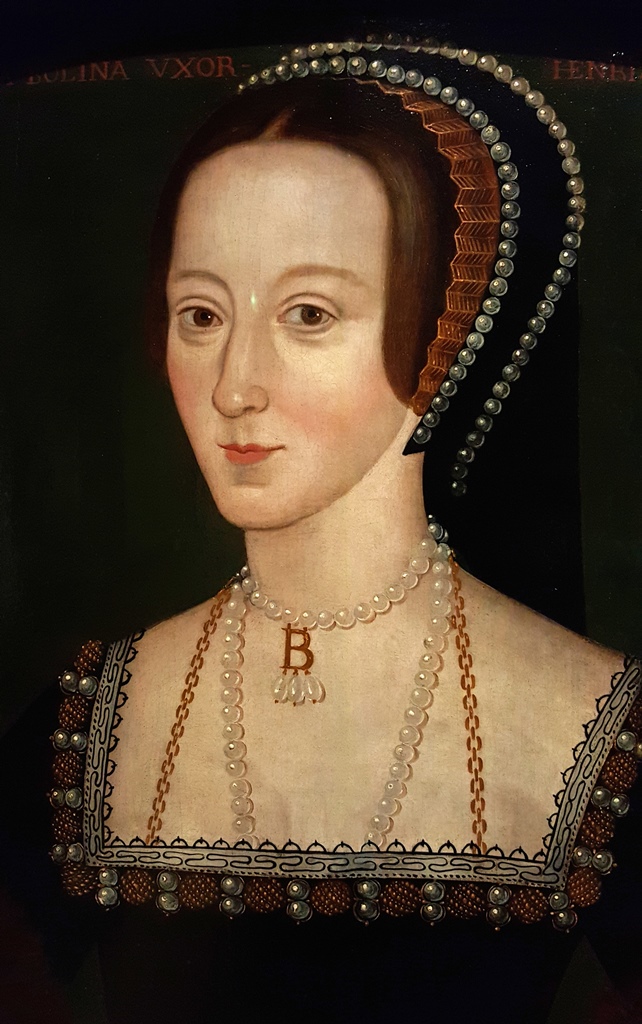
Anne Boleyn (ca. 1533-36)
Katherine Parr (ca. 1545)
-
Mary I (1516-58) – daughter of Henry VIII and Katherine of Aragon; first reigning
queen of England; tried to return England to Catholic church, sometimes dealing
harshly with heretics, earning nickname "Bloody Mary"
-
Philip II of Spain (1527-98) – yes, "of Spain"; in Portrait Gallery because he was
married to Mary I from 1554 until her death; later sent Spanish Armada to attack
England (disastrously) in 1588
-
Elizabeth I (1533-1603) – daughter of Henry VIII and Anne Boleyn; last monarch of
House of Tudor; reversed efforts of Mary I toward Catholicism, stabilizing
Protestantism in England during long reign
-
Mary, Queen of Scots (1542-87) – Queen of Scotland and cousin of Elizabeth I;
supported by Catholics who wanted her to replace Elizabeth; imprisoned by Elizabeth
for 18 years, eventually found guilty of plotting against Elizabeth and executed
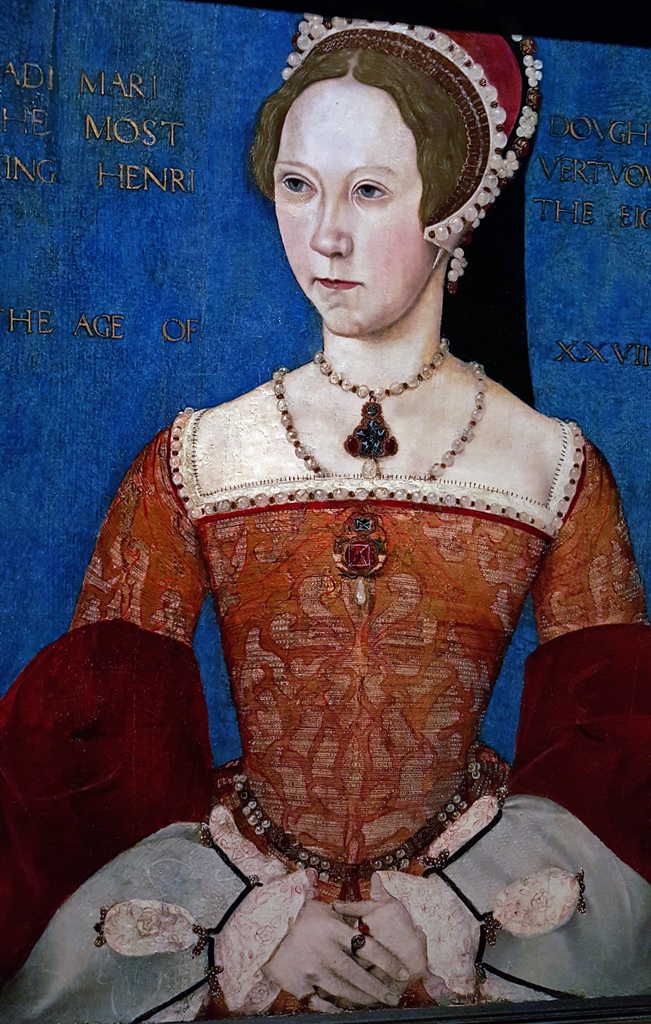
Mary I, Master John (1544)
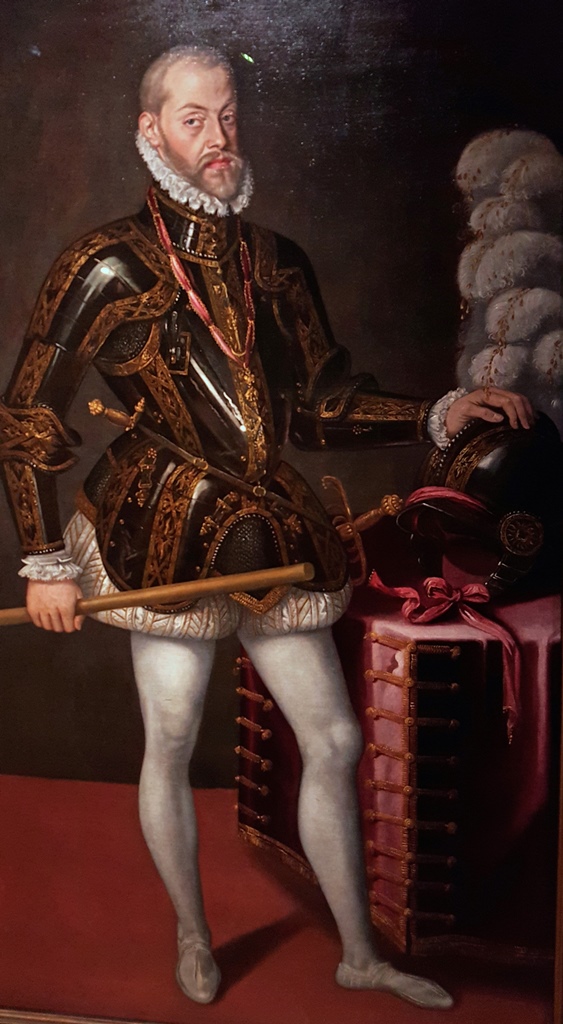
Philip II, King of Spain (ca. 1580)
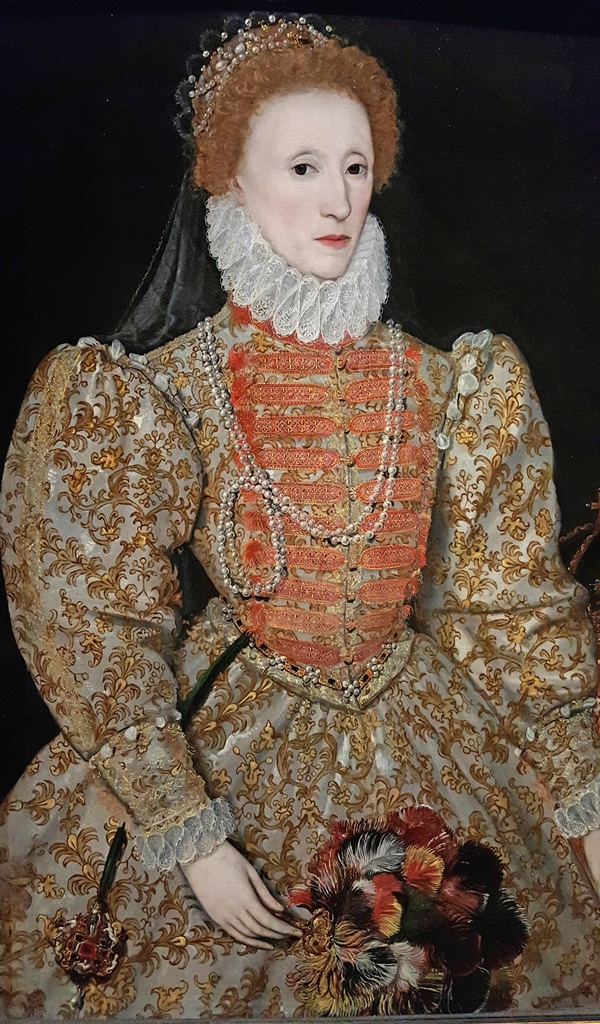
Elizabeth I (ca. 1575)
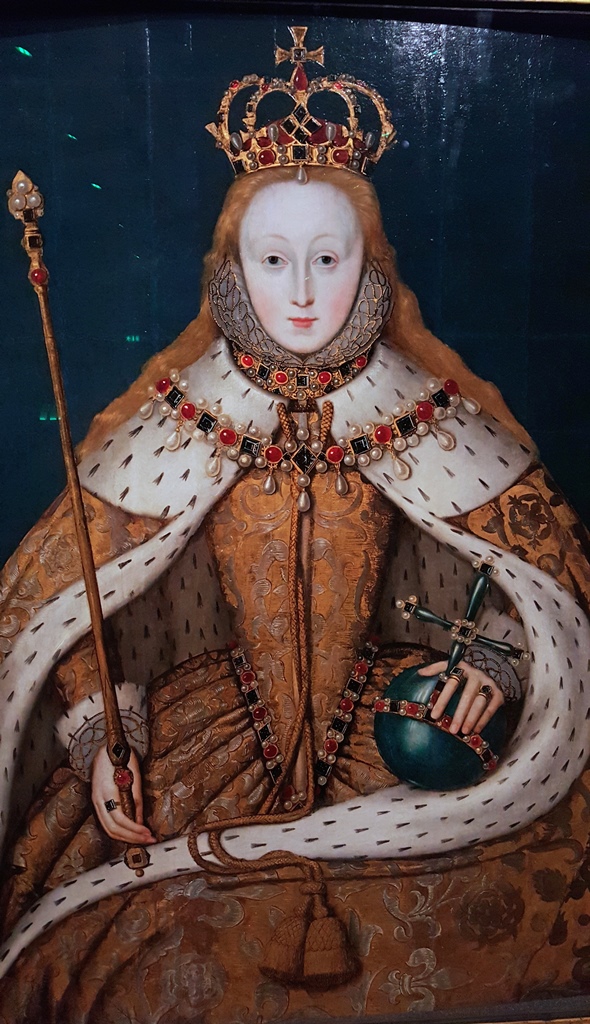
Elizabeth I (ca. 1600)
Mary, Queen of Scots, After Nicholas Hilliard (16th C.)
-
James I (1566-1625) – King of England, Scotland and Ireland; son of Mary, Queen
of Scots; first ruler of House of Stuart; sponsored the King James Bible
-
Charles I (1600-1649) – quarreled with Parliament, believed in the divine right of
kings, married French Catholic Princess Henrietta Maria; fought armies of English
and Scottish Parliaments in English Civil War; lost Civil War and was executed,
leading to temporary replacement of monarchy with Commonwealth of England and
Oliver Cromwell
-
Charles II (1630-1685) – son of Charles I and Henrietta Maria; became king after
being exiled during Commonwealth; invited to return after death of Oliver Cromwell;
popular and seen as a return to normalcy in era called "The Restoration"
-
Mary II (1662-1694) – co-ruler with her husband William III (AKA William of Orange);
William and Mary became rulers after James II was deposed in the Glorious Revolution
for trying to bring back Catholicism; endowed College of William and Mary in
Virginia; Mary died of smallpox at the age of 32
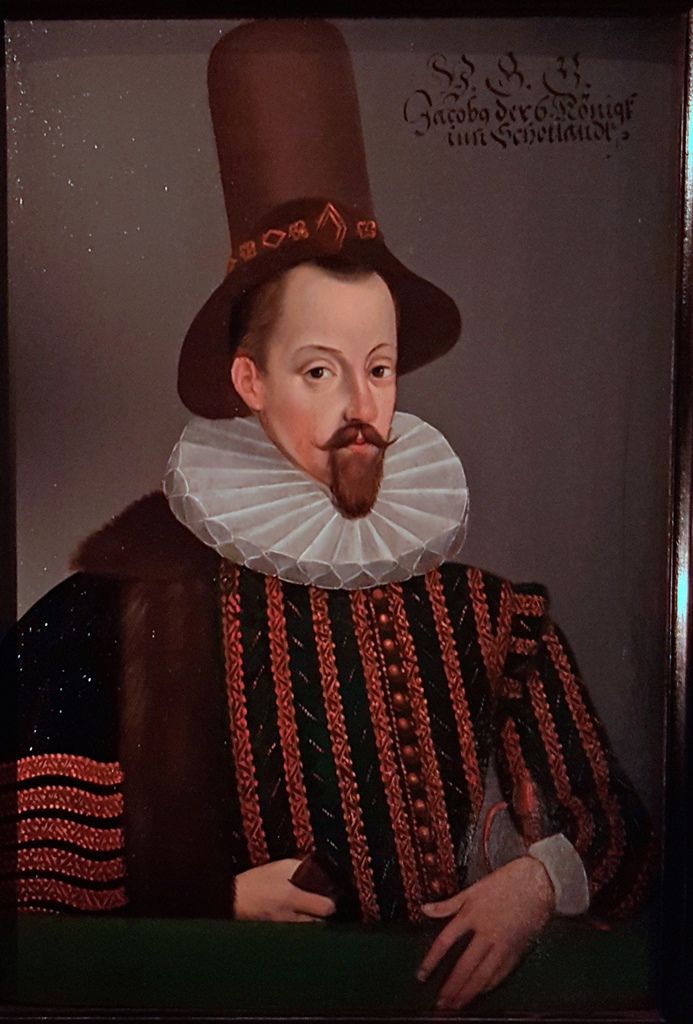
James I of England and VI of Scotland (ca. 1590)
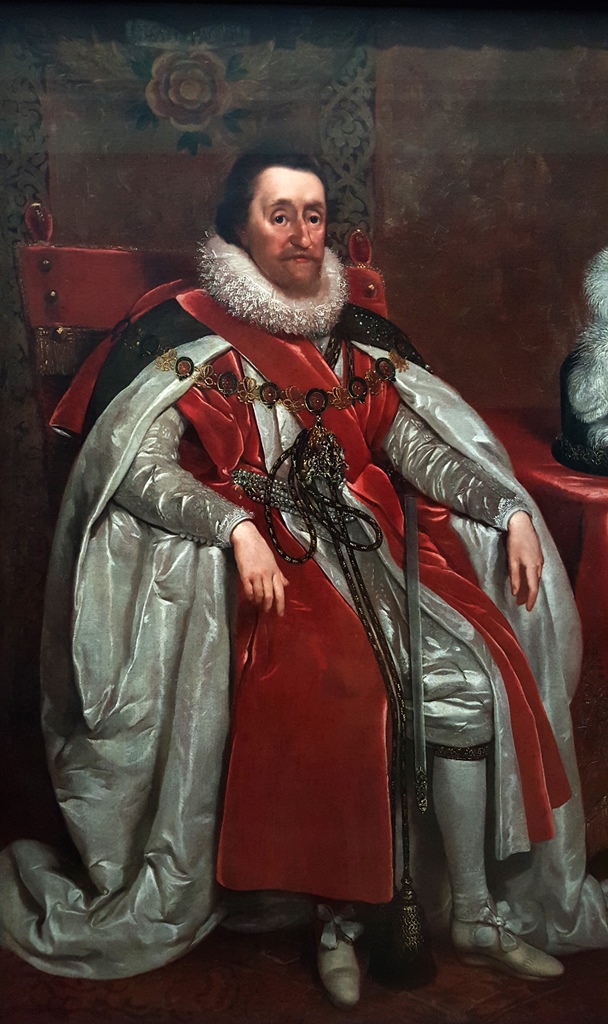
James I of England and VI of Scotland, Daniel Mytens (1621)
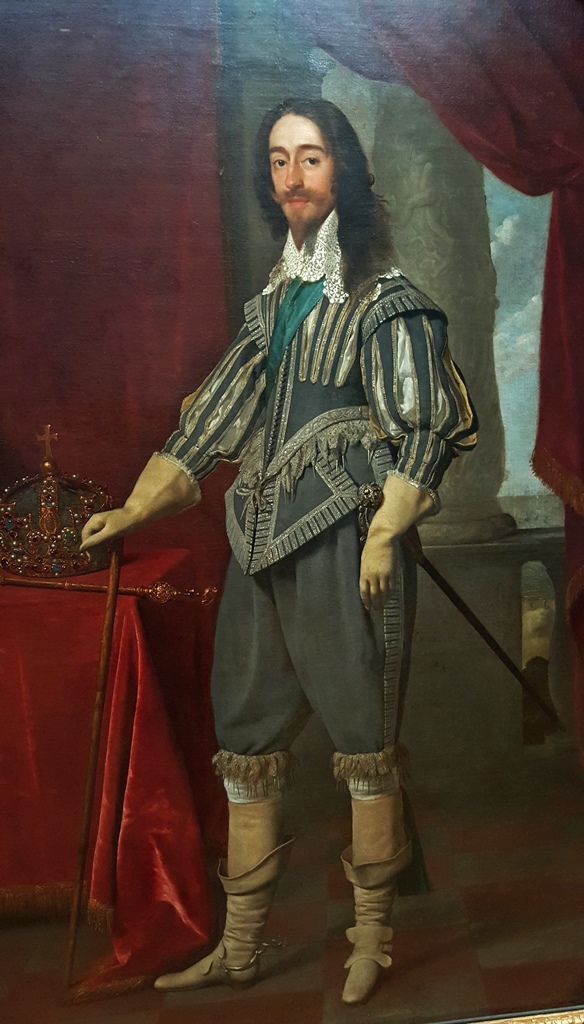
Charles I, Daniel Mytens (1631)
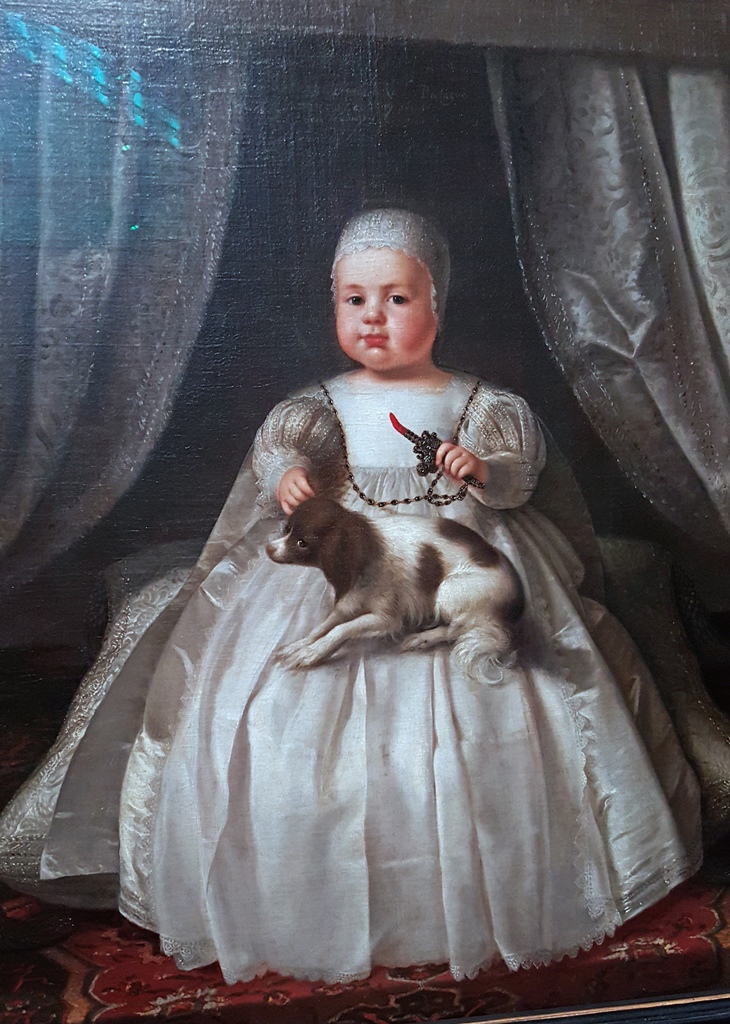
Charles II (1630)
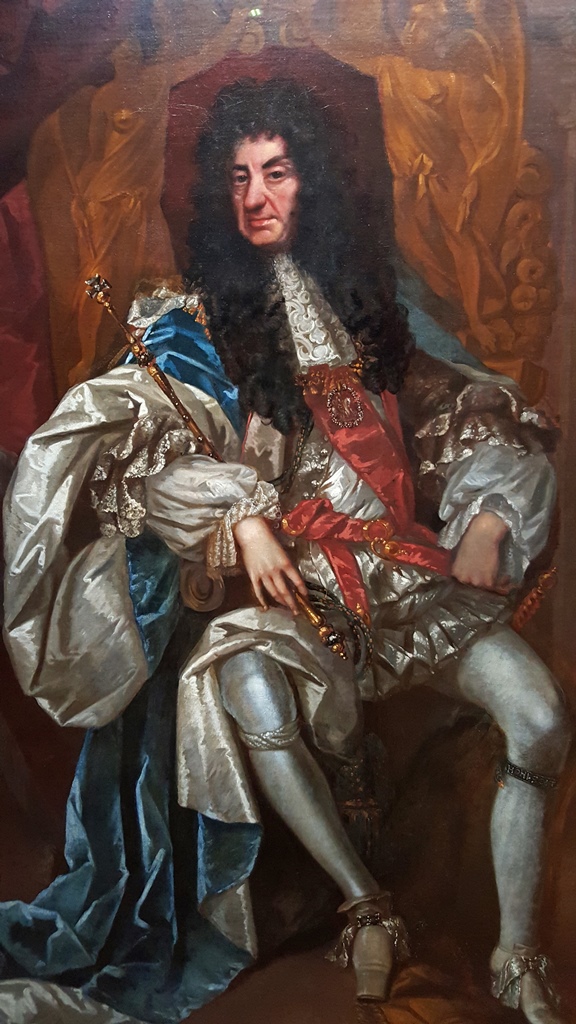
Charles II, Thomas Hawker (attrib.) (ca. 1680)
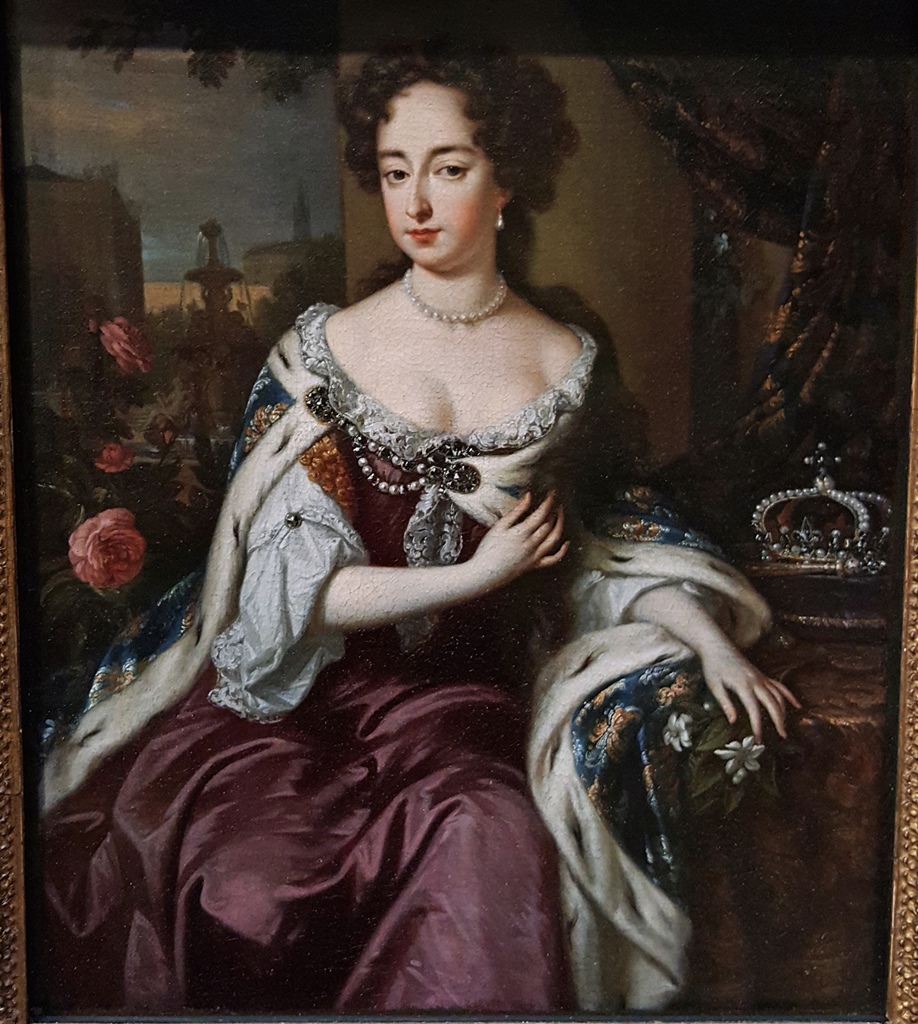
Mary II, Jan Verkolje (ca. 1685)
-
George II (1683-1760) – second ruler of House of Hanover; born and raised in
northern Germany; largely left domestic policy to Parliament but more active in
foreign policy; also an Elector of Hanover
-
George III (1738-1820) – grandson and successor to George II; reigned for 59 years,
during Seven Years' War, American Revolutionary War, French Revolutionary and
Napoleonic Wars; suffered from mental illness in later years, with his son ruling
as regent starting in 1811
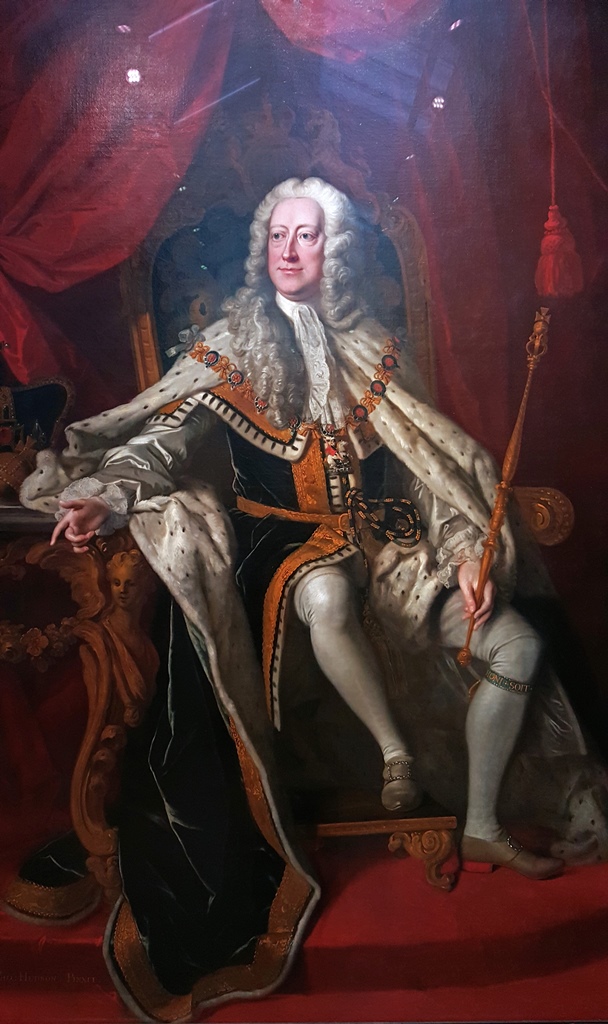
George II, Thomas Hudson (1744)
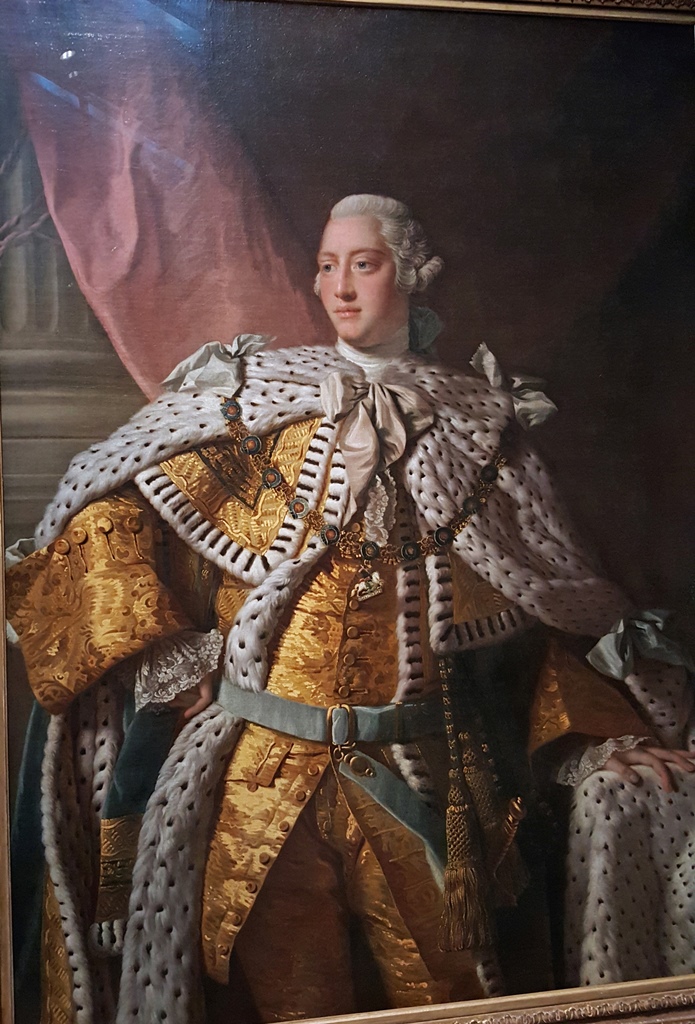
George III, Studio of Allan Ramsay (1761-62)
-
Victoria (1819-1901) – granddaughter of George III, became Queen at age 18 and
ruled for 63 years; married cousin Prince Albert and had 9 children; added title
"Empress of India" in 1876; last monarch of House of Hanover
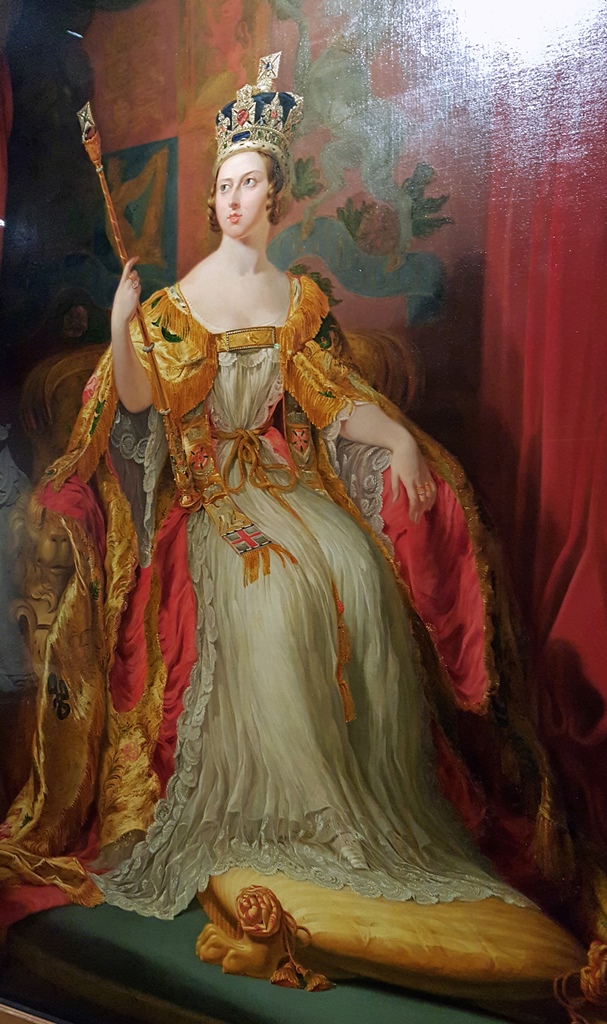
Queen Victoria, Sir George Hayter (1863, based on 1838 work)
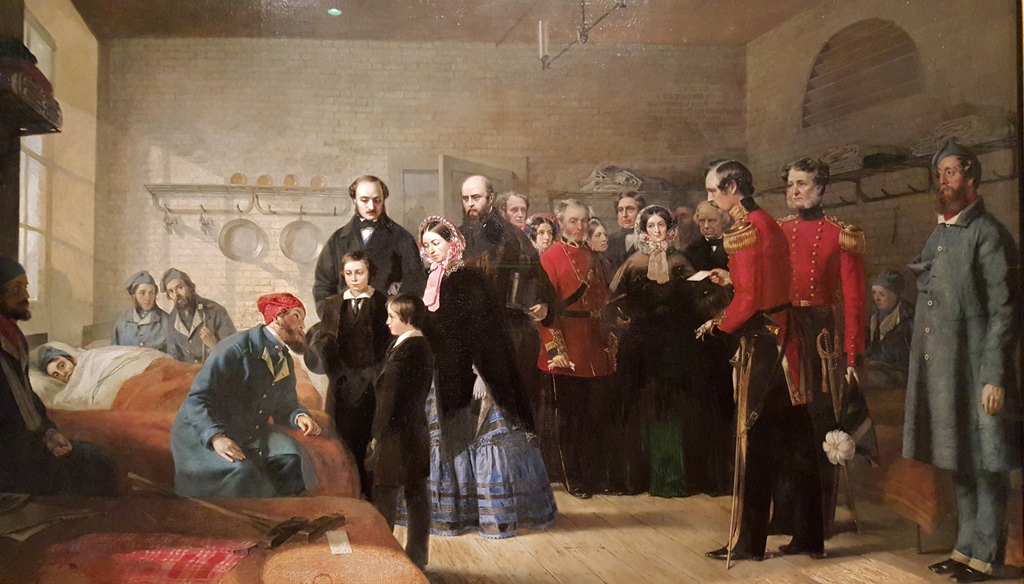
Queen Victoria's First Visit to Her Wounded Soldiers, Jerry Barrett (1856)
-
George V (1865-1936) – grandson of Victoria and first monarch of the House of Windsor;
ruled during World War I; Nicholas II of Russia and Wilhelm II of Germany were his
first cousins
-
Wallis, Duchess of Windsor (1896-1986) – when George V died in 1936, he was succeeded
by his son Edward VIII; Edward was impatient with the job and wanted to marry Wallis
Simpson, a twice-divorced American; Parliament found this unacceptable, so Edward
abdicated in favor of his brother, who became George VI; Edward and Wallis married
and became Duke and Duchess of Windsor; Edward died in 1972
-
Group Portrait of George VI (1895-1952), Elizabeth (later the Queen Mother, 1900-2002),
Princess Elizabeth (later Elizabeth II, born 1926) and Princess Margaret (1930-2002) –
the Royal Family in 1950; the family stayed in London during the Blitz and throughout
World War II, becoming a popular symbol of determination; the British Empire started a
decline during George's reign, largely from effects of the war
-
Prince William (born 1982) and Prince Harry (born 1984) – children of Prince Charles
and Princess Diana, and grandchildren of Queen Elizabeth II
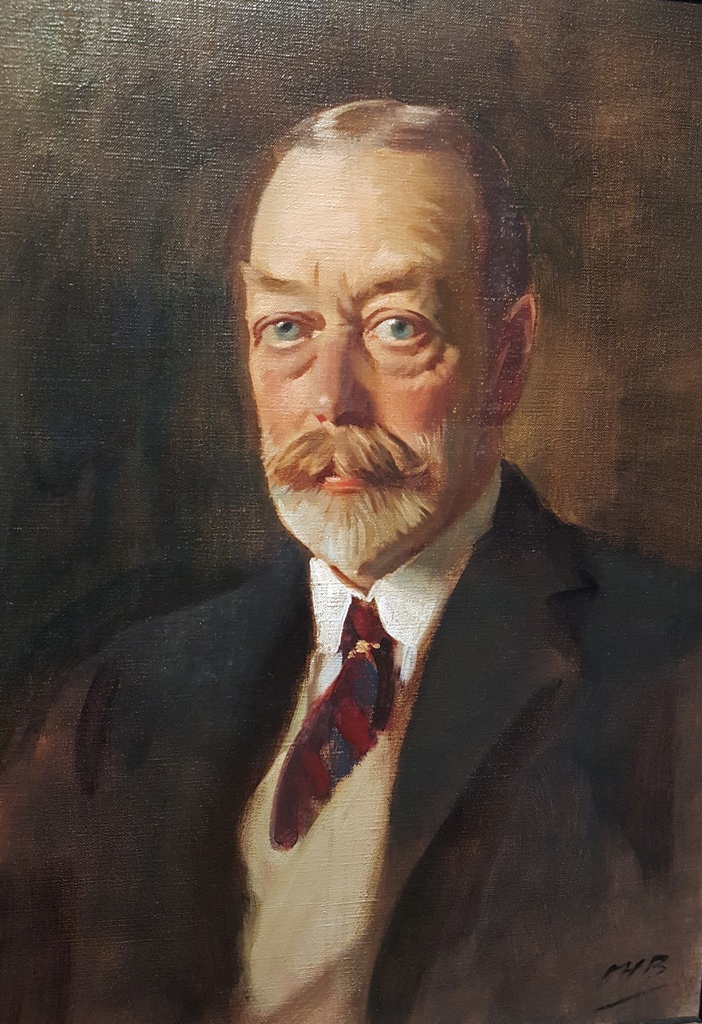
George V, Sir Oswald Birley (ca. 1933)
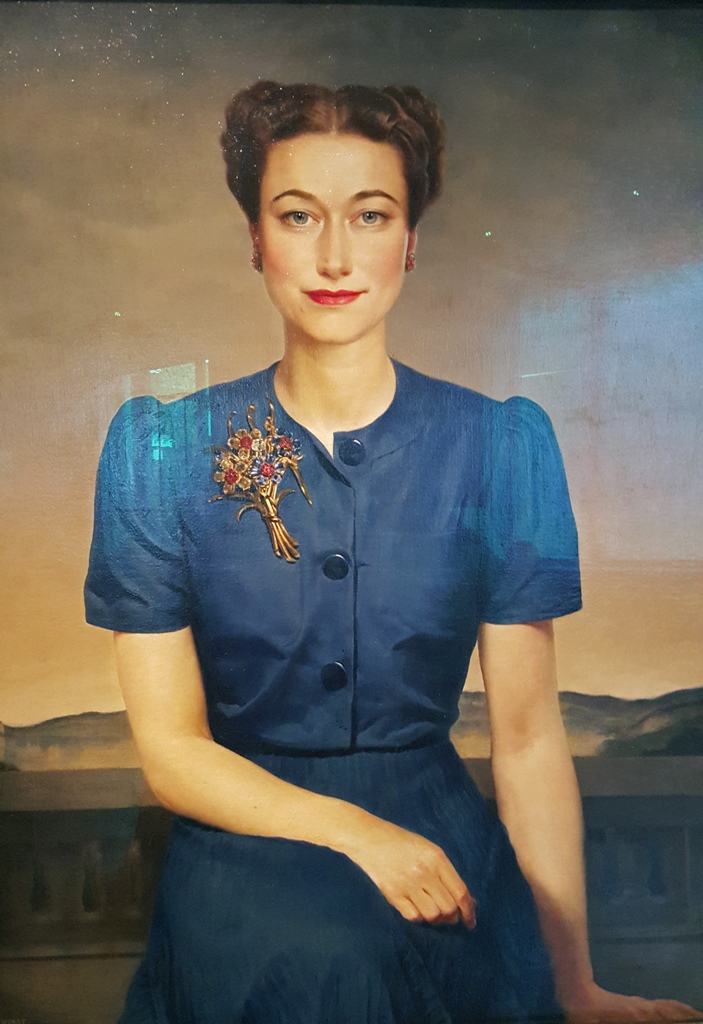
Wallis, Duchess of Windsor, Gerald Leslie Brockhurst (1939)
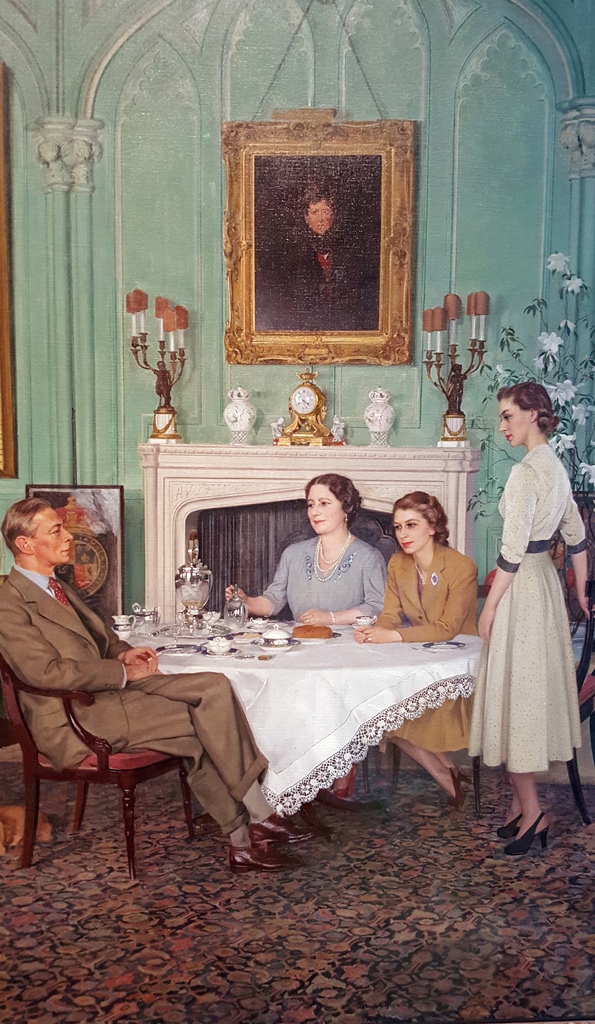
Royal Family at Royal Lodge, Windsor, Sir James Gunn (1950)
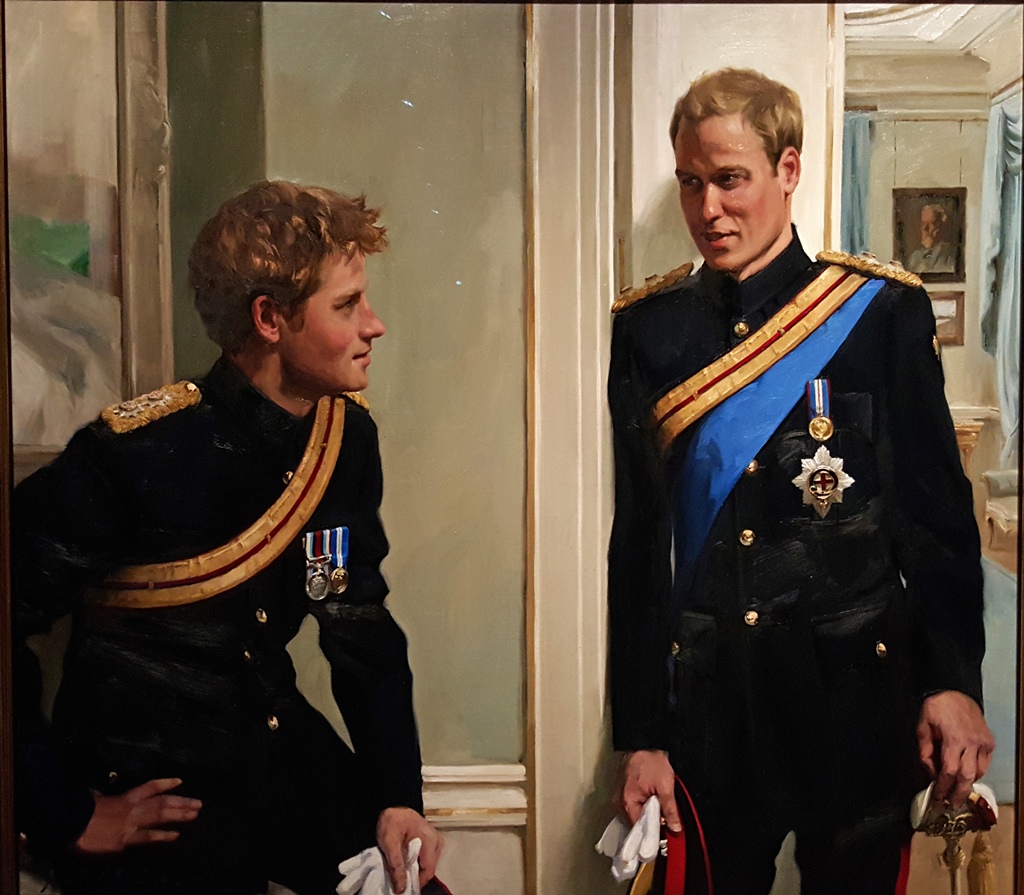
Prince William, Duke of Cambridge and Prince Harry, Nicky Philipps (2009)
The next category is people who "rose to the occasion" in times of war:
-
Sir Francis Drake (1540-96) – completed second circumnavigation of earth; acted as a
privateer against Spanish shipping, making British government (and himself) very
wealthy; second in command in battle against Spanish Armada in 1588
-
George Washington (1732-99) – commanded the Continental Army (successfully) during
the American Revolution and served two terms as the first President of the United
States, setting many precedents; before all this, fought for the British in a
command capacity in the French and Indian War
-
Horatio Nelson (1758-1805) – Vice-Admiral in the Royal Navy who defeated French
and Spanish opposition in the Battle of the Nile and the Battle of Trafalgar,
among other engagements, in the process virtually eliminating the threat of
invasion by France; fatally wounded in the Battle of Trafalgar
-
Arthur Wellesley, 1st Duke of Wellington (1769-1852) – defeated Napoleon's army
in crucial battles in the Peninsular Campaign in Spain and ended Napoleon's
career by defeating him in the Battle of Waterloo (with help from Prussia);
became a member of Parliament and served as Prime Minister twice
-
Florence Nightingale (1820-1910) – the founder of modern nursing; developed
procedures and policies while acting as a manager and trainer of nurses in the
Crimean War; established a nursing school in London
-
Bernard Montgomery (1887-1976) – served in both World Wars, most successfully in
World War II; led forces that stopped the advance of Erwin Rommel in North Africa,
eventually forcing him off the continent; was in charge of the invasion of Sicily
and initial invasion of the Italian mainland; in charge of land forces during
Normandy invasion and led 21st Army Group during liberation of Europe
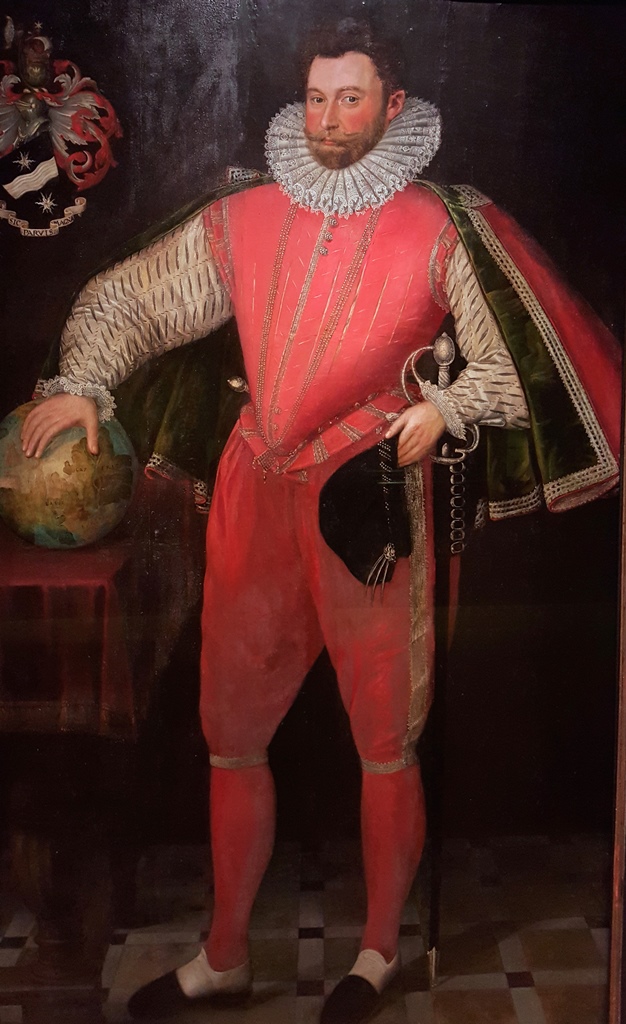
Sir Francis Drake (ca. 1581)
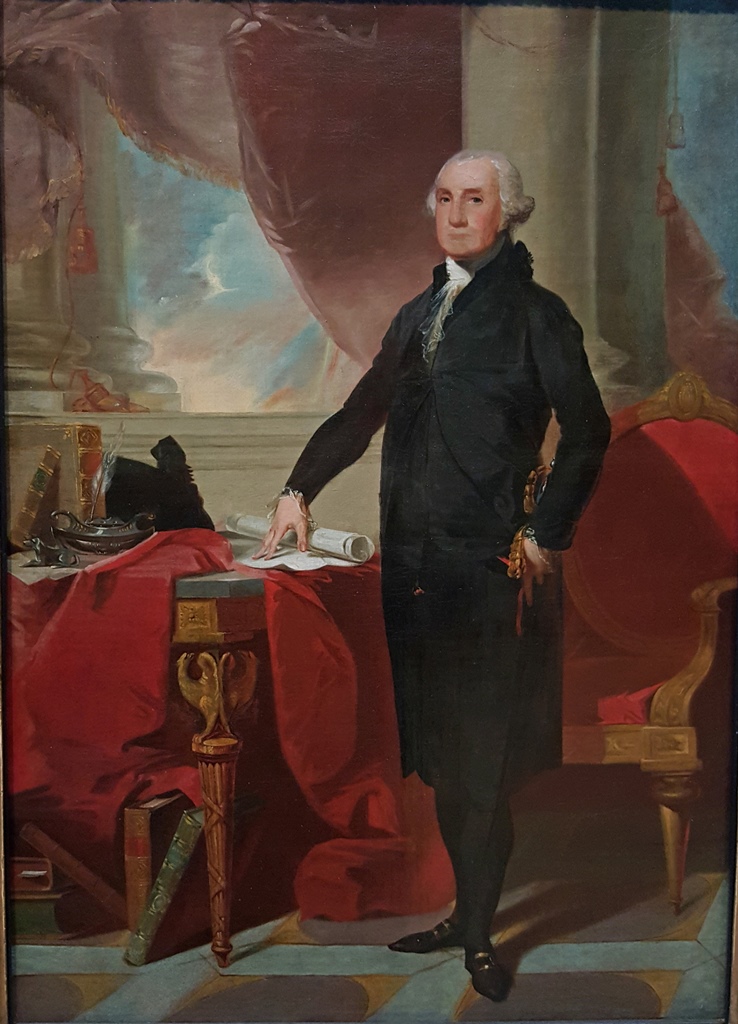
George Washington, After Gilbert Stuart (1797)
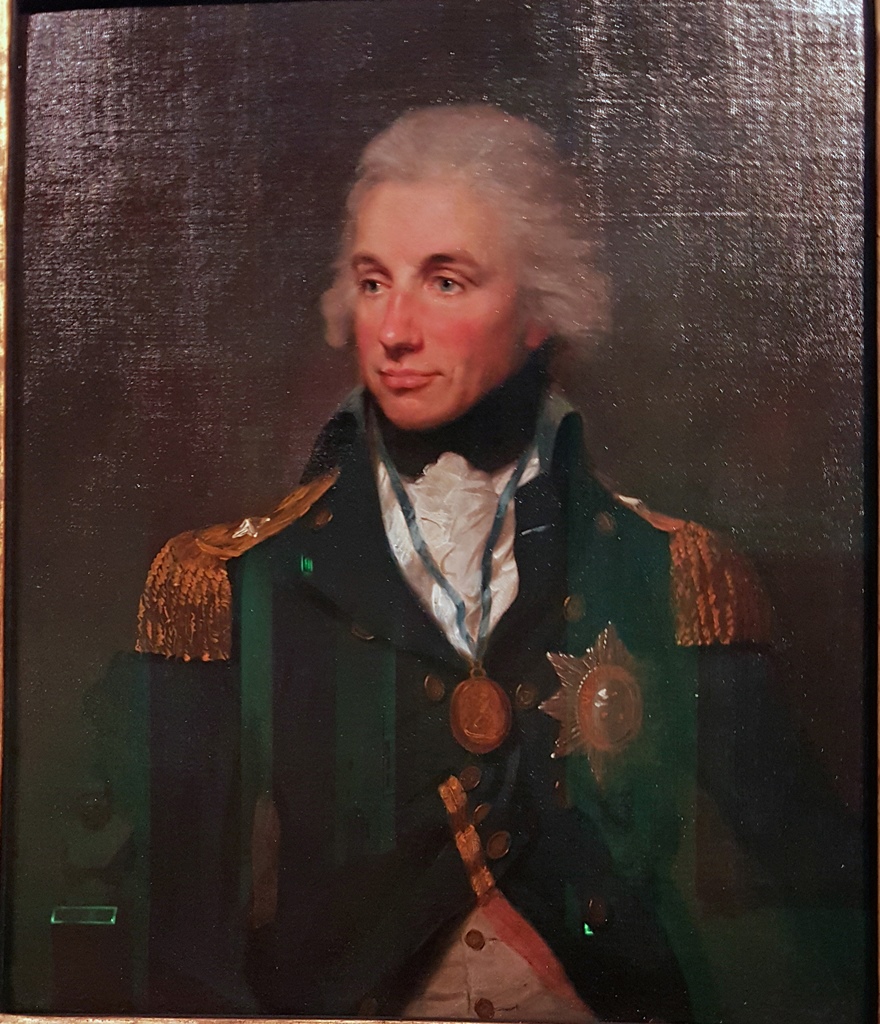
Horatio Nelson, Lemuel Francis Abbott (1797)
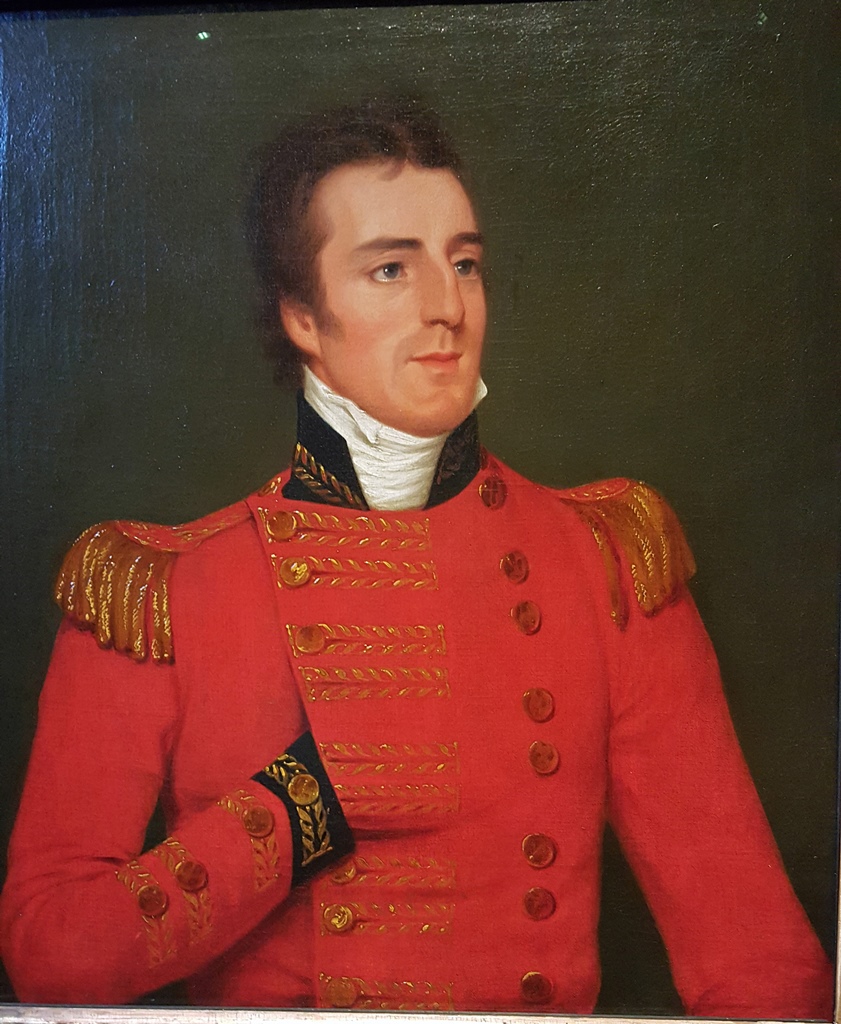
Arthur Wellesley, 1st Duke of Wellington, Robert Home (1804)
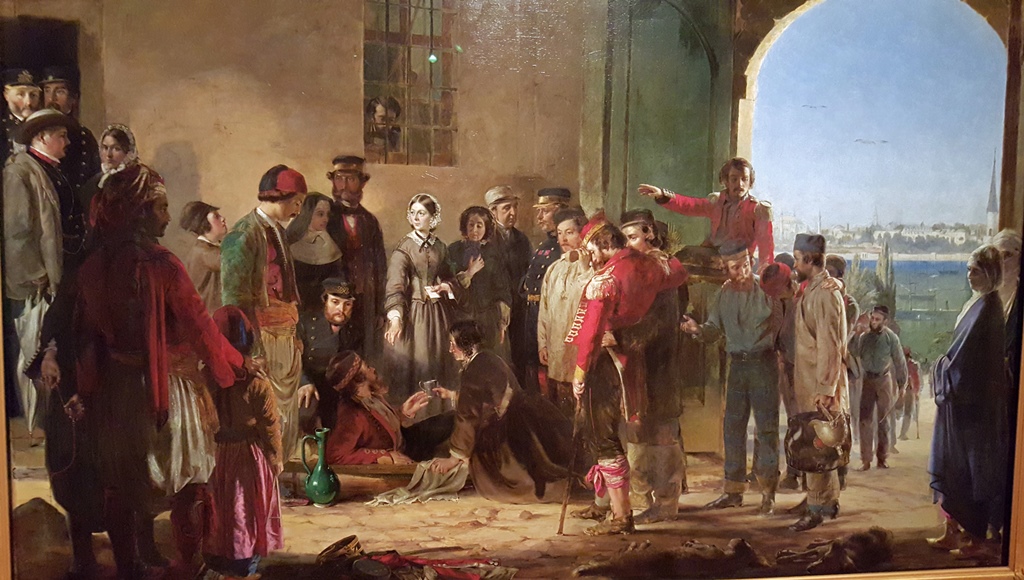
Florence Nightingale Receiving the Wounded at Scutari, Jerry Barrett (1857)
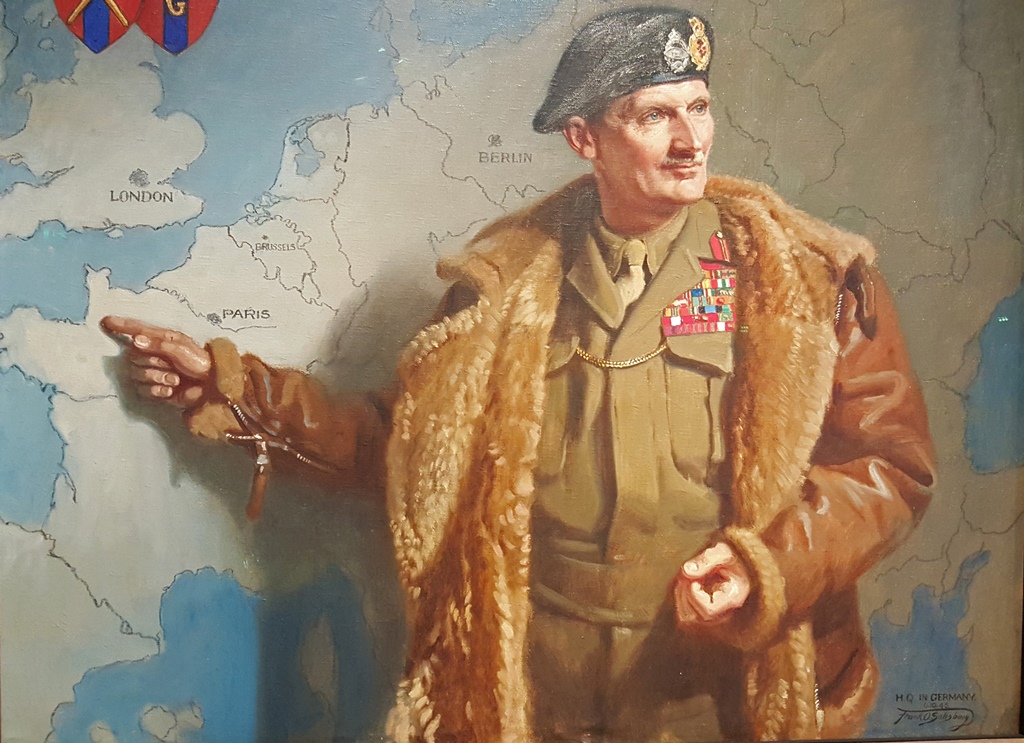
Bernard Montgomery, Frank O. Salisbury (1945)
Here are some explorers:
-
Sir Walter Raleigh (1552-1618) – many things to many people – a soldier who saw action
in Ireland and Spain; a writer of poetry and an ambitious but never finished "Historie of
the World"; a favorite of Queen Elizabeth; never visited North America, but sponsored the
Roanoke Colony in present-day North Carolina, which became "The Lost Roanoke Colony";
helped popularize tobacco smoking in England; traveled to South America twice in search
of El Dorado, the City of Gold, and wrote exaggerated accounts; imprisoned in the
Tower of London twice, by Elizabeth (for secretly marrying a lady-in-waiting) and her
successor James I (for alleged involvement in supporting a different successor); executed
at the insistence of Spain when one of his subordinates attacked a Spanish outpost in
South America in violation of a treaty
-
Captain James Cook (1728-79) – Royal Navy captain, cartographer and navigator who led
three expeditions to the Pacific Ocean, the first a famous circumnavigation in the HMS
Endeavour, during which he observed the Transit of Venus in Tahiti and the Transit of
Mercury in New Zealand and was the first European to map places like New Zealand and the
east coast of Australia while naming a bunch of stuff; eventually killed by irate natives
in Hawaii
-
Sir Ernest Shackleton (1874-1922) – led three British expeditions to Antarctica; most
famous was his 1914-15 expedition aboard the ship Endurance, when the ship became
trapped in pack ice which ended up crushing it; Shackleton and crew traveled to Elephant
Island using an ice floe and the ship's lifeboats; from there, Shackleton and five
crewmembers used one lifeboat to successfully sail for help in extremely difficult
conditions; all of the crew were rescued, with no loss of life
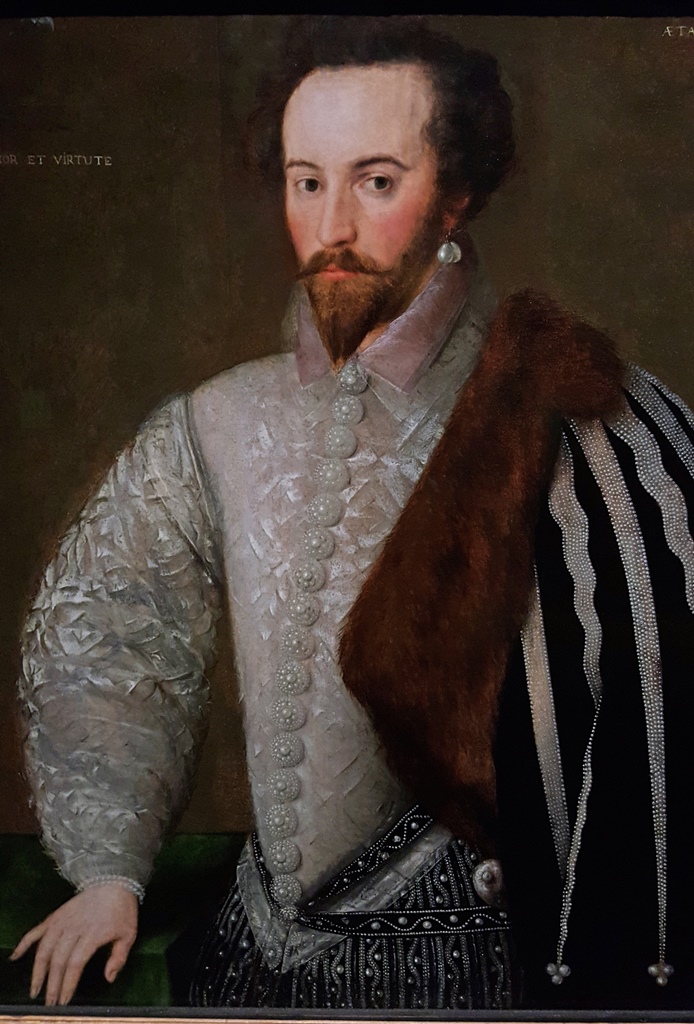
Sir Walter Raleigh (1588)
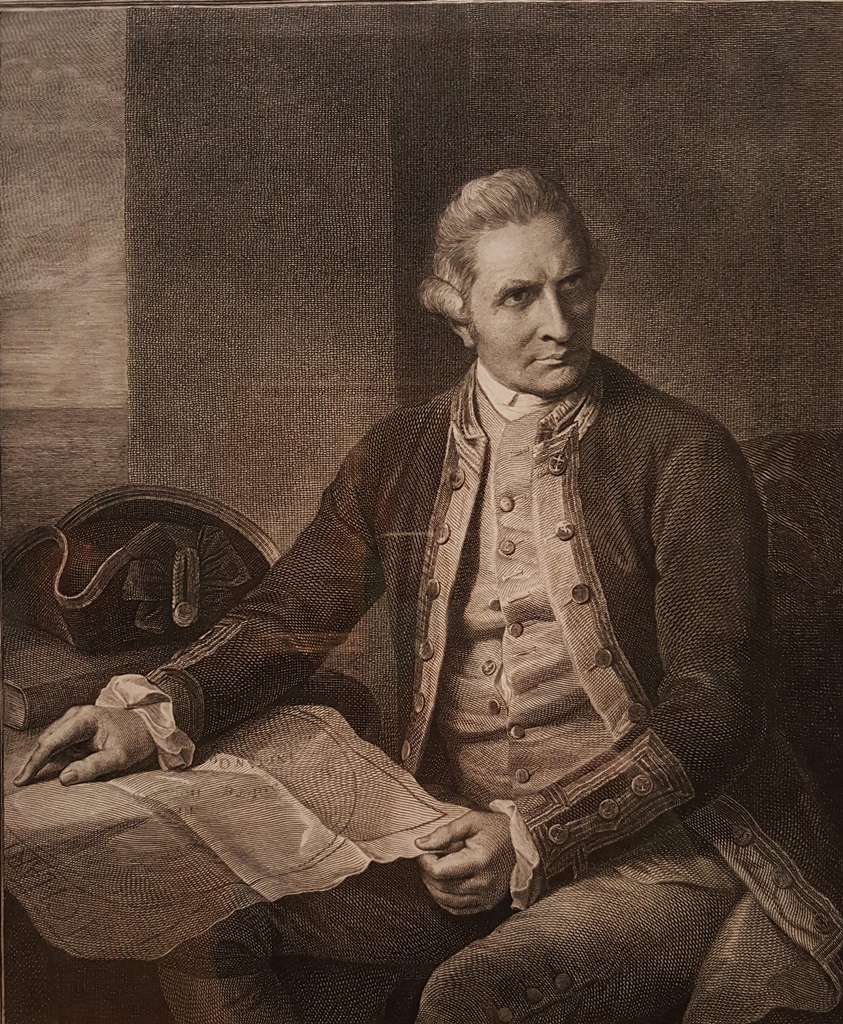
James Cook, John Keyse Sherwin and Nathaniel Dance (1784)
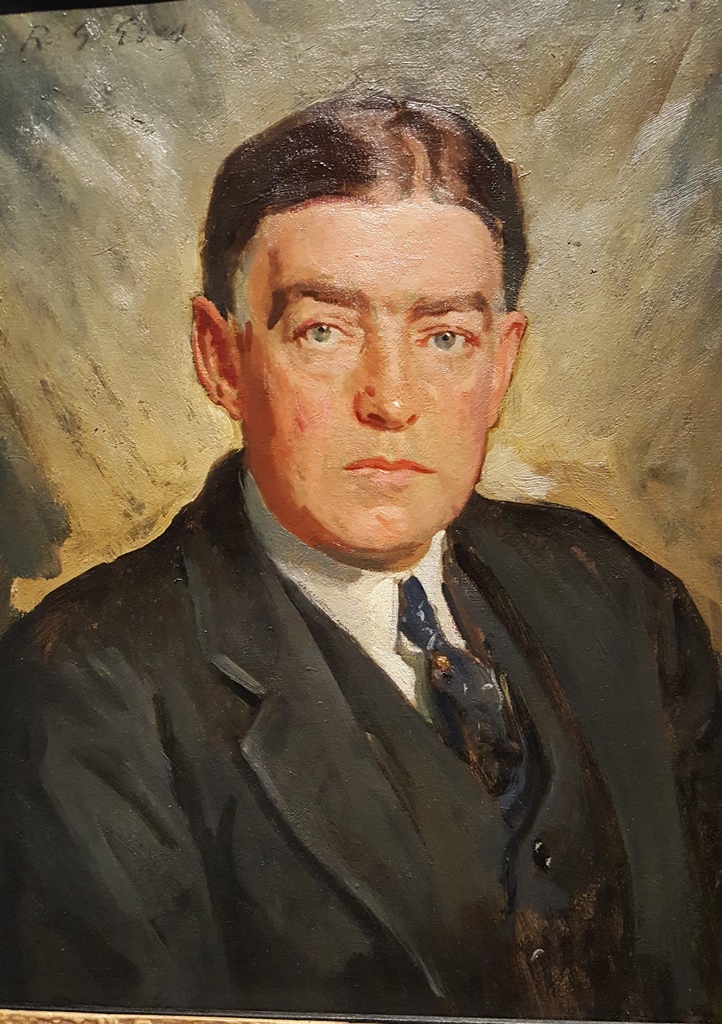
Sir Ernest Shackleton, Reginald Grenville Eves (1921)
The following people mostly made their names in politics:
-
Sir Thomas Raffles (1781-1826) – statesman and founder of modern Singapore and British
Malaya; Lieutenant-Governor of Dutch East Indies and Lieutenant-Governor of Bencoolen
(on Sumatra)
-
Arthur Neville Chamberlain (1869-1940) – British Prime Minister from 1937 until 1940;
bargained in good faith with Adolf Hitler, who did not bargain in good faith, resulting
in the 1938 Munich Agreement, which ceded much of Czechoslovakia to Germany; this
postponed World War II until the following year, when Hitler (and the Soviet Union)
violated the agreement by invading Poland
-
Sir Winston Churchill (1874-1965) – replaced Chamberlain as Prime Minister in 1940 and
successfully led the nation through World War II, directing Britain's overall strategy
and delivering many inspirational speeches; earlier in his career, served as a war
correspondent from a variety of theaters, followed by a number of government
positions; oversaw the Gallipoli campaign during World War I, which proved disastrous;
a prolific writer throughout his career, he was awarded the Nobel Prize in Literature
in 1953
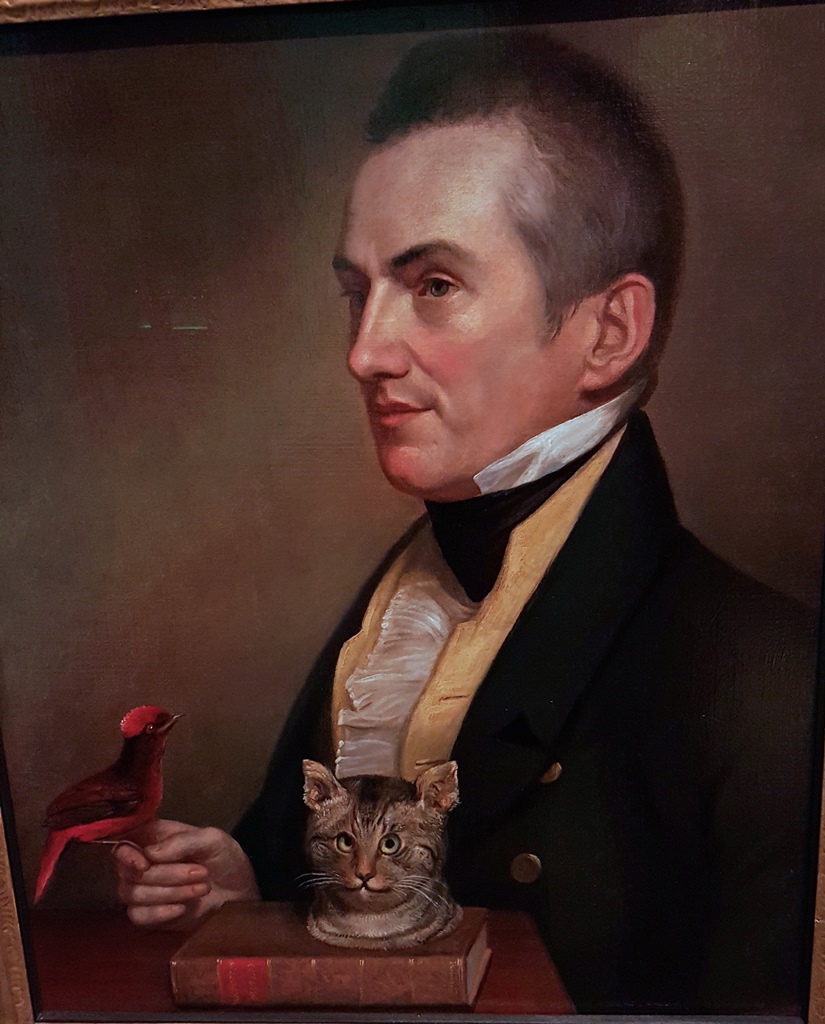
Sir Thomas Stamford Bingley Raffles, George Francis Joseph (1817)
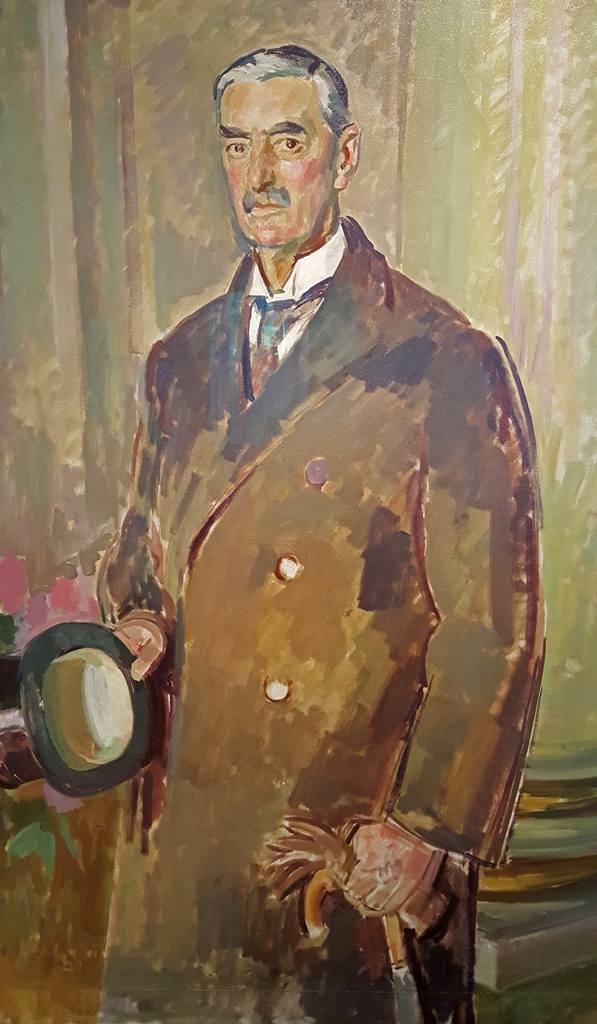
Arthur Neville Chamberlain, Henry Lamb (ca. 1939)
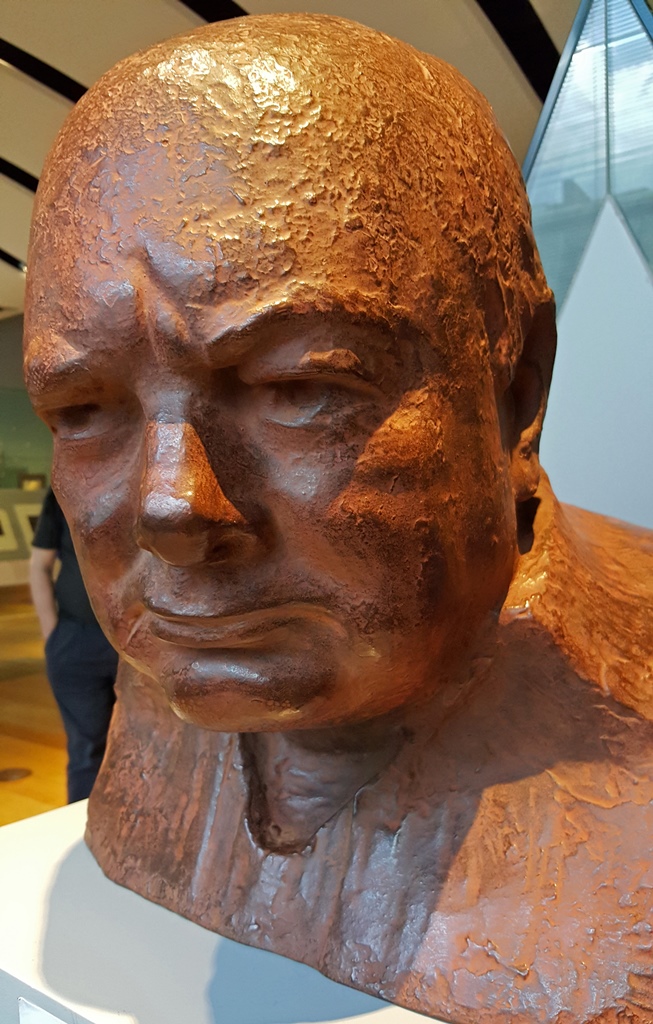
Sir Winston Churchill (ca. 1955), After Oscar Nemon (1995)
The following were practitioners of science, or "natural philosophy":
-
William Harvey (1578-1657) – a physician who was the first to completely describe the
human circulatory system
-
Robert Boyle (1627-91) – one of the founders of modern chemistry and a developer of
the modern scientific method; came up with Boyle's Law, describing the relationship
between pressure and volume of a gas in a closed system
-
Sir Isaac Newton (1643-1727) – mathematician, physicist, astronomer, theologian,
author; one of the most influential scientists ever, essentially inventing modern
physics (until being superseded by troublemakers like Einstein and Heisenberg) and
co-inventing calculus (with Gottfried Wilhelm von Leibniz, who developed much the
same ideas independently); also dabbled in alchemy; served as Master of the Royal
Mint and President of the Royal Society simultaneously for more than two decades
-
Edmond Halley (1656-1742) – famous for accurately predicting the periodicity of the
comet named after him, based on Newton's laws of motion; funded the publication of
Newton's work Principia Mathematica, one of the most important works in the
history of science; did additional study of astronomy and terrestrial magnetism
-
James Watt (1736-1819) – developed a more efficient and practical steam engine,
which fundamentally contributed to the Industrial Revolution; invented the concept
of horsepower; the standard unit of power, the watt, is named after him
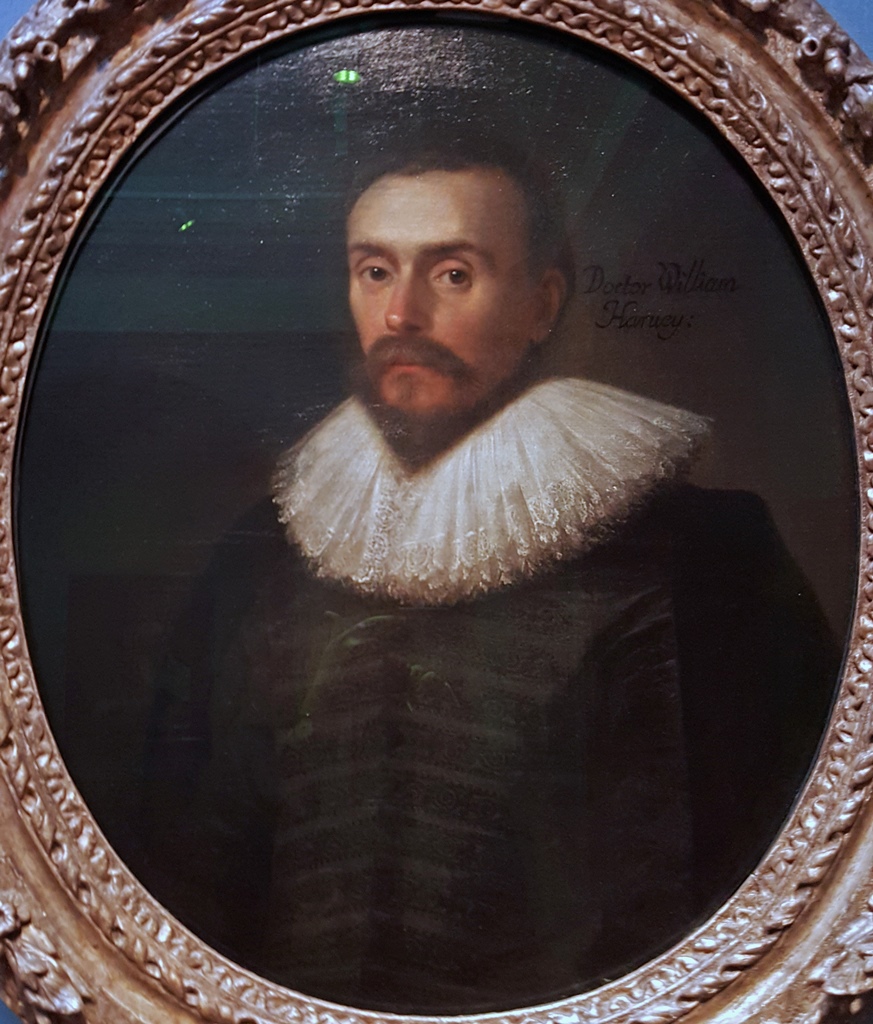
William Harvey, Daniel Mytens (attrib.) (ca. 1627)
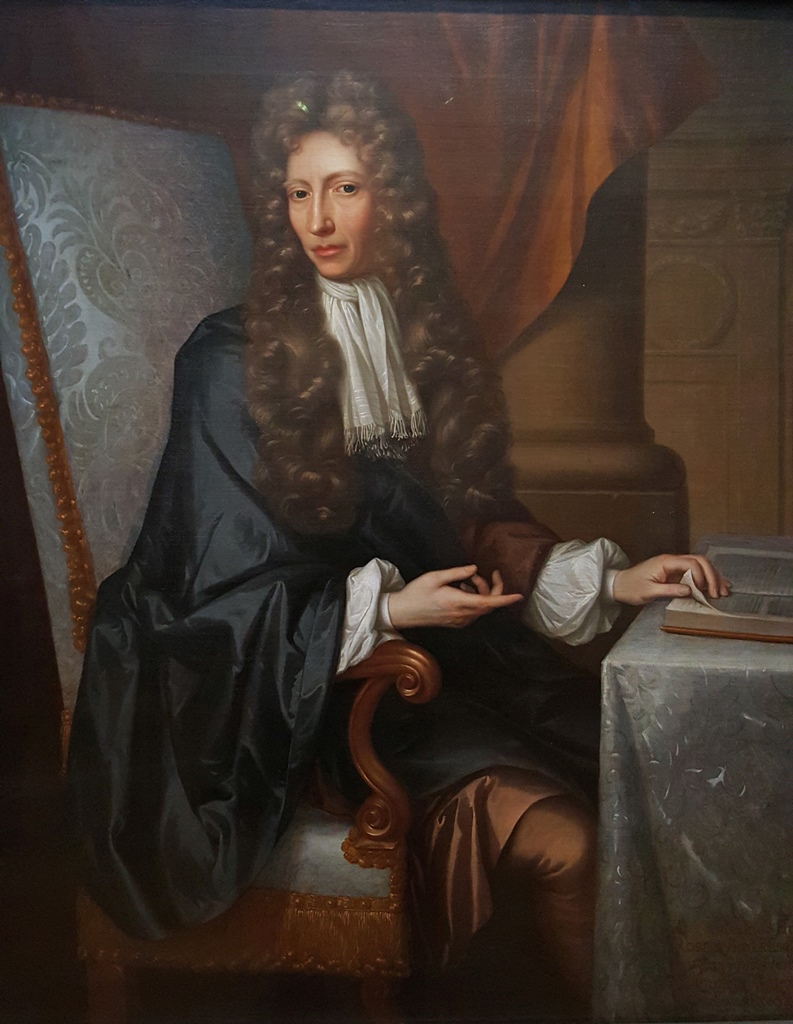
Robert Boyle, Johann Kerseboom (1689-90)
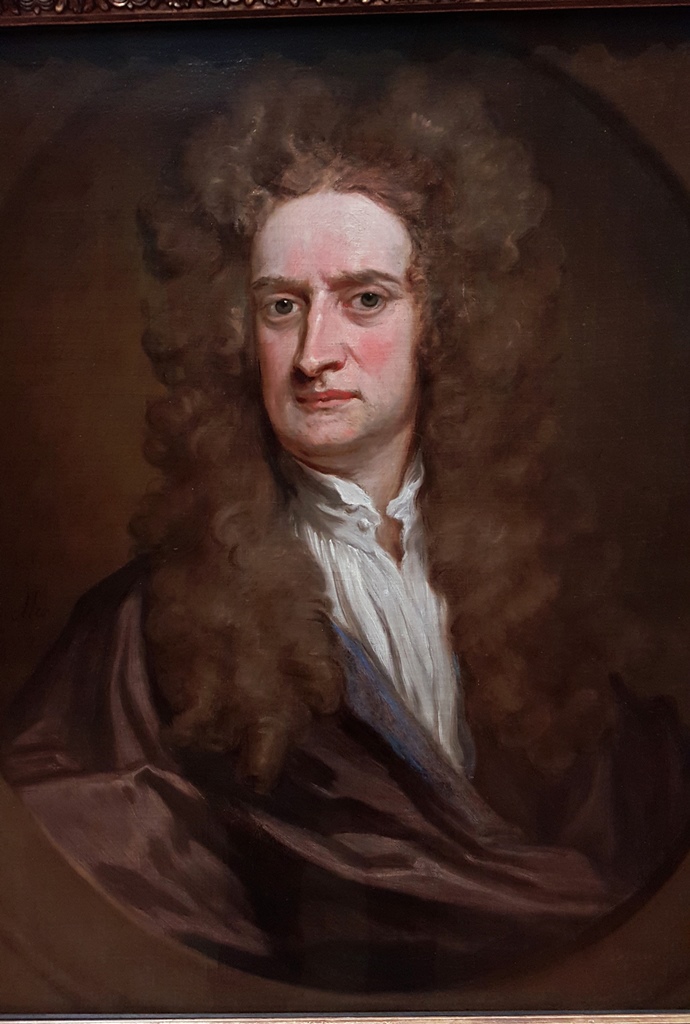
Sir Isaac Newton, Sir Godfrey Kneller (1702)
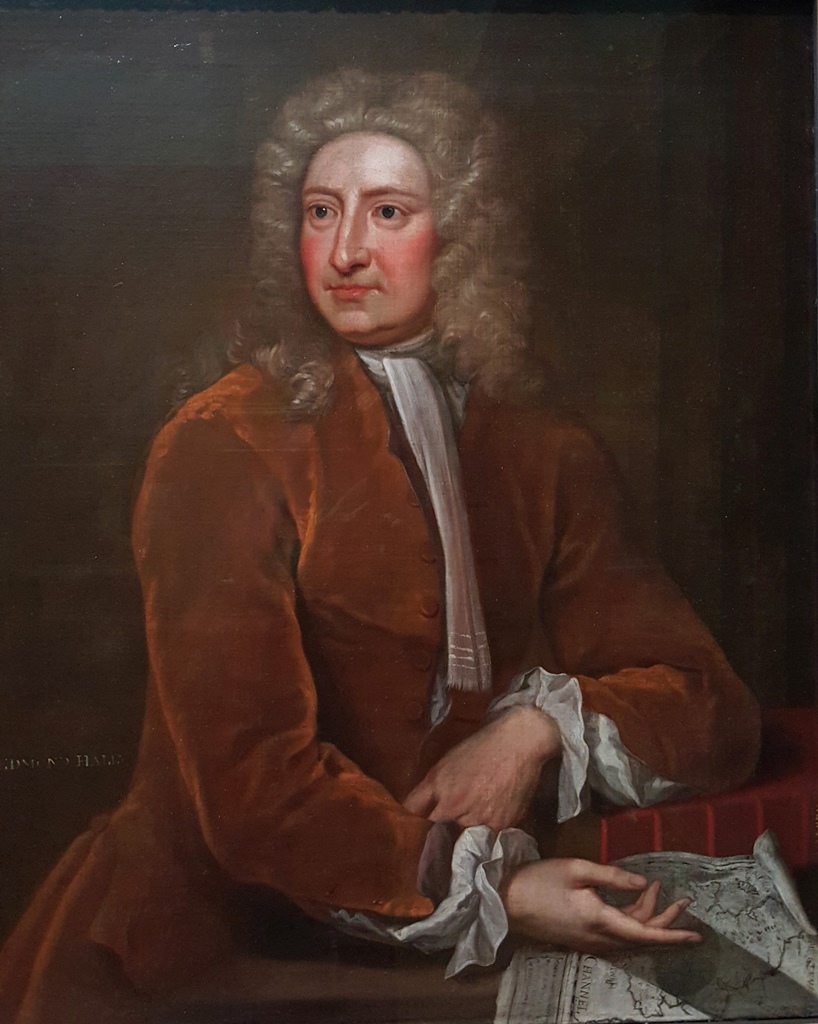
Edmond Halley, Isaac Whood (attrib.) (ca. 1720)
James Watt, Carl Frederik von Breda (1792)
-
Sir Joseph Banks (1743-1820) – a naturalist who accompanied Captain Cook on his
Endeavour expedition (with fellow naturalist Daniel Solander), collecting
samples (mostly botanical) and making observations all the way around the world;
advised George III on development of Kew Gardens outside London, turning it into
the world's leading botanic garden through addition of samples collected by him
and by other world-travelling botanists; served as President of the Royal Society
for 41 years; advocated colonization of eastern Australia as a suitable place for
settlers and convicts
-
Edward Jenner (1749-1823) – credited with development of the smallpox vaccine based
on the much milder cowpox virus; at the time, smallpox was killing 10% of the
British population (a higher percentage in towns and cities); Jenner noticed that
milkmaids who caught cowpox didn't catch smallpox, and ran with the idea; Jenner
invented the word "vaccination", which is based on a Latin word for anything
related to cows
-
Sir Humphry Davy (1778-1829) – invented the field of electrochemistry; used
electricity to isolate a selection of elements (e.g. potassium, sodium, calcium,
magnesium, etc.); experimented on himself (sometimes dangerously) with different
gases and theorized that nitrous oxide could be a useful anesthetic during surgeries
-
Michael Faraday (1791-1867) – expanded on the work of Humphry Davy, to whom he was
an assistant for a number of years, to develop principles underlying
electromagnetism and electrochemistry; discovered electromagnetic fields,
electromagnetic induction and diamagnetism, and laws of electrolysis; the standard
unit of capacitance, the farad, is named after him
-
William Thomson, Lord Kelvin (1824-1907) – mathematical physicist and engineer who
worked in the field of mathematical analysis of electricity; worked on formulation
of the first and second laws of thermodynamics; worked on the transatlantic telegraph
project and was knighted by Queen Victoria for his trouble; the absolute temperature
scale is expressed in "degrees kelvin" in his honor
-
Joseph Lister (1827-1912) – surgeon and pioneer of antiseptic surgery; applied Louis
Pasteur's discoveries in microbiology to advocate sterilization of surgical
instruments and keeping wounds clean; recommended use of carbolic acid (now called
phenol) as an antiseptic; work resulted in dramatic reduction of post-operative
infections, making surgery much safer; sometimes called the "father of modern surgery";
Listerine, first developed in 1879, was named after him
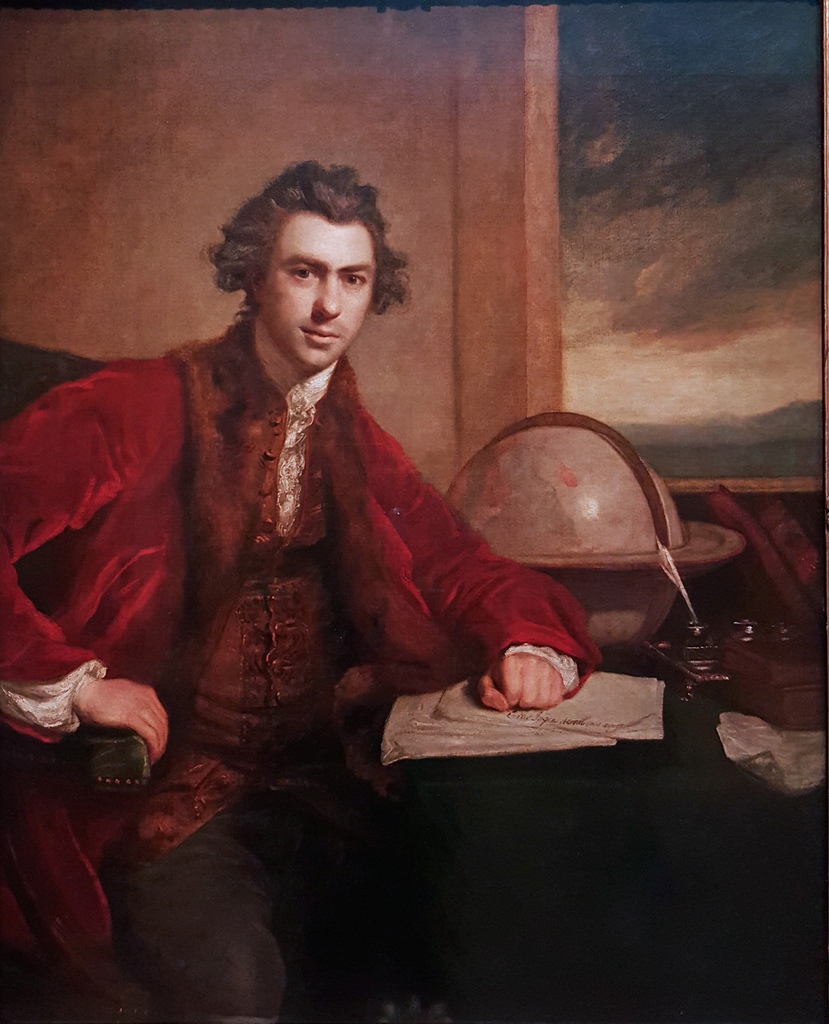
Sir Joseph Banks, Sir Joshua Reynolds (1773)
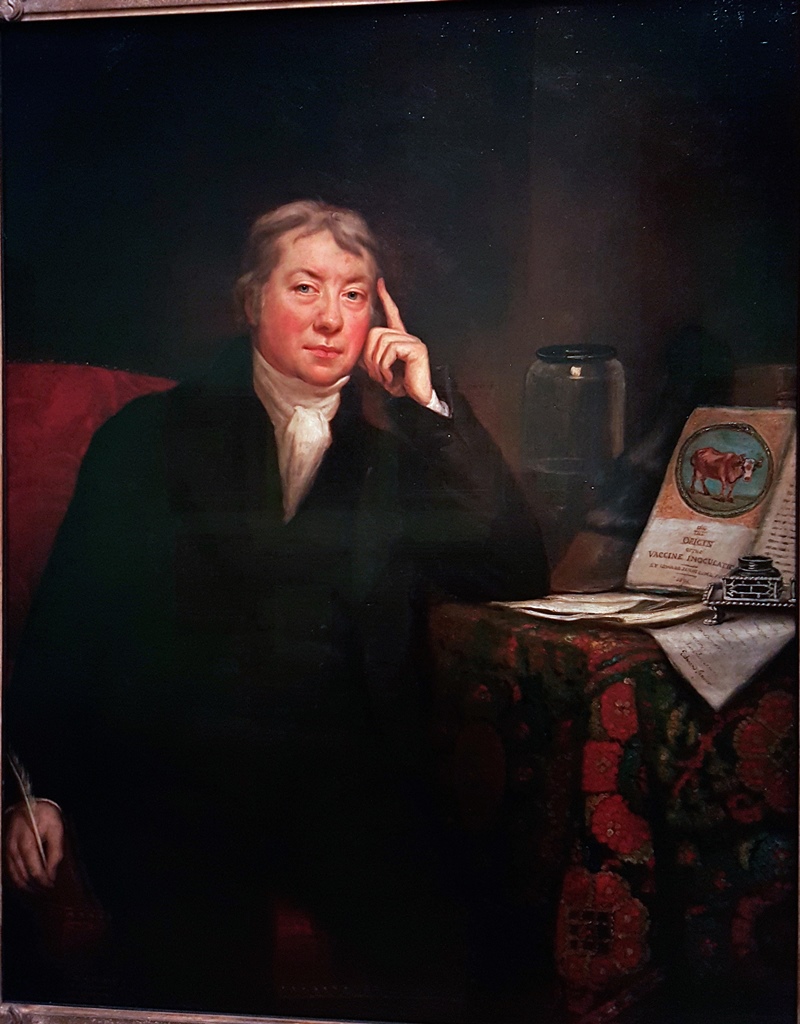
Edward Jenner, James Northcote (1803)
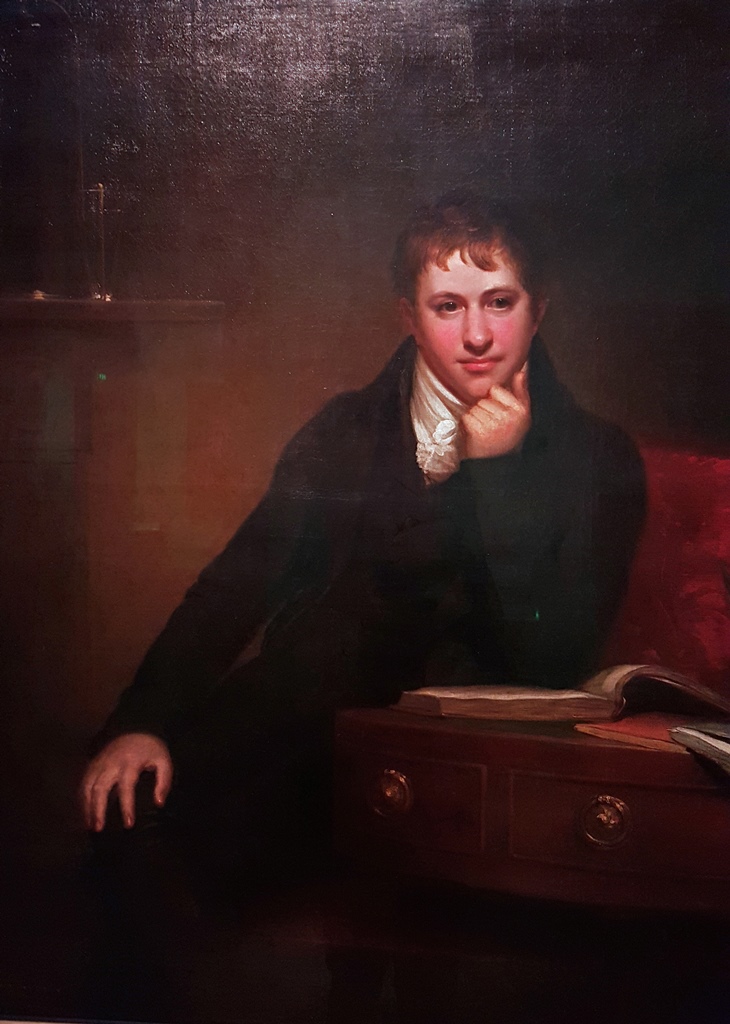
Sir Humphry Davy, Henry Howard (1803)
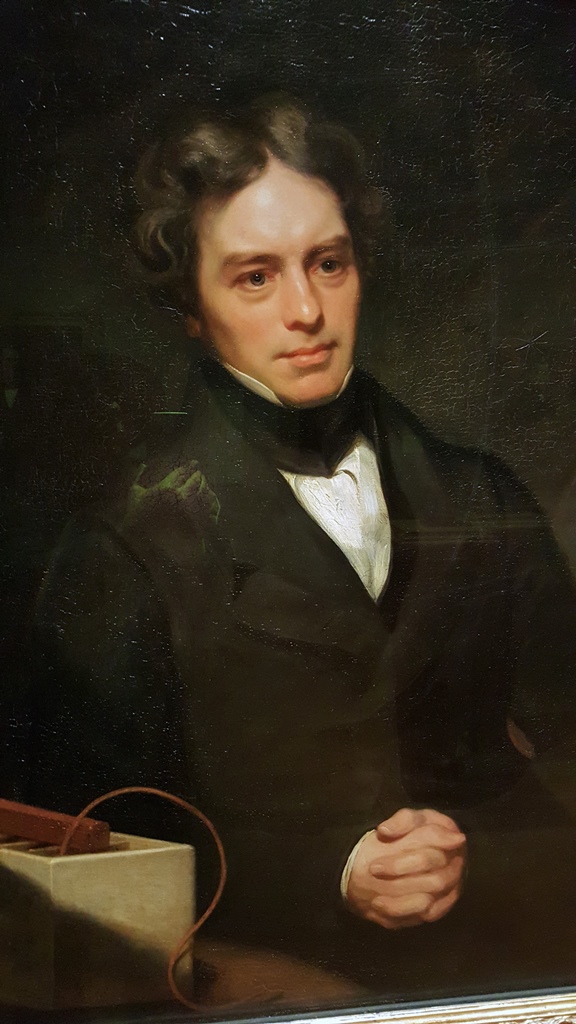
Michael Faraday, Thomas Phillips (1841-42)
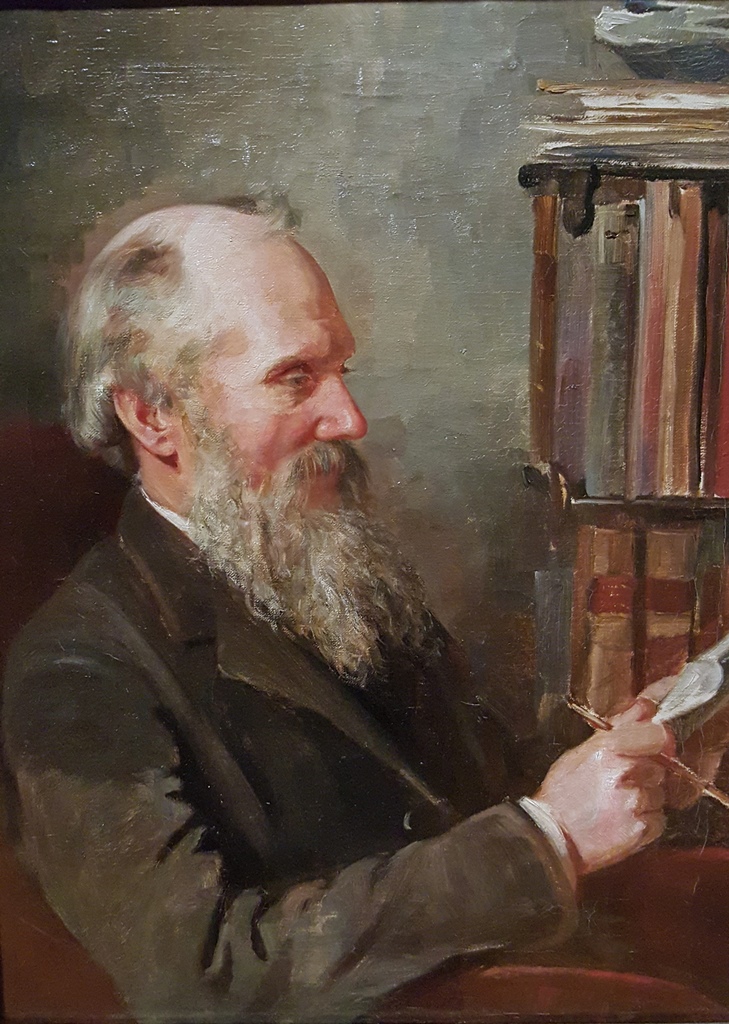
William Thomson, Lord Kelvin, Elizabeth King (1886-87)
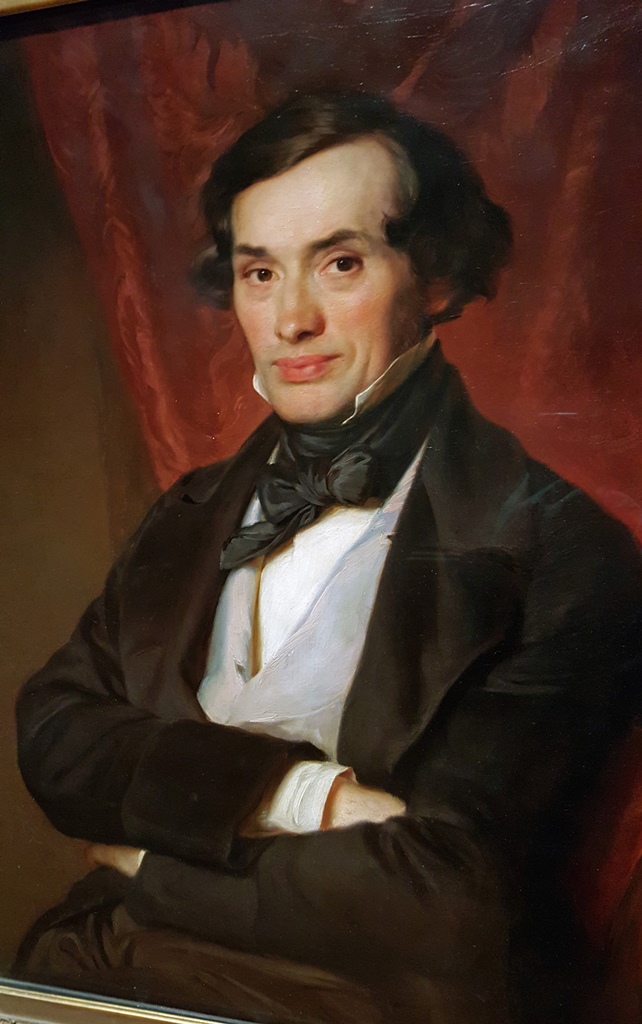
Joseph Lister
Finally, these people made their names in literature, philosophy or the arts:
-
Sir Thomas More (1478-1535) – Lord High Chancellor of England under Henry VIII;
writer of Utopia, a work about an imaginary, ideal island nation; opposed
Henry's separation from the Catholic Church and wouldn't recognize Henry as
Supreme Head of the Church of England; executed for treason; canonized by the
Catholic Church as a martyr in 1935
-
Samuel Pepys (1633-1703) – Chief Secretary of the Admiralty under Charles II and
James II; most famous for a personal diary he kept between 1660 and 1669 which
gave detailed eyewitness accounts and personal impressions during great events
of the Restoration period (e.g. the Great Plague and Great Fire of London and
the Second Dutch War)
-
Jonathan Swift (1667-1745) – satirist, essayist, poet and cleric; Dean of St.
Patrick's Cathedral in Dublin; most famous for writing Gulliver's Travels
(1726)
-
George Frideric Handel (1685-1759) – Baroque composer who was born in
Brandenburg-Prussia but who spent most of his career in London, becoming a
naturalized British subject in 1727; his many works include operas, oratorios,
anthems and organ concertos, but his most famous works include the Messiah
(1742), Water Music (1717) and Music for the Royal Fireworks (1749)
-
Samuel Johnson (1709-84) – writer of many genres, including poetry, drama, essays,
biography and literary criticism; most well-known works were his Dictionary of
the English Language (which was the authoritative British dictionary until
Oxford's Dictionary came of 150 years later) and his body of literary criticism,
which set the standard at the time; probably most famous for being the subject of
a biography written by James Boswell
-
James Boswell (1740-95) – Scottish writer who is best known for writing a biography
of his friend Samuel Johnson; this biography is often called the greatest ever
written in the English language for its innovative inclusion of personal and human
details, many from conversations with the subject that he'd recounted in his journals
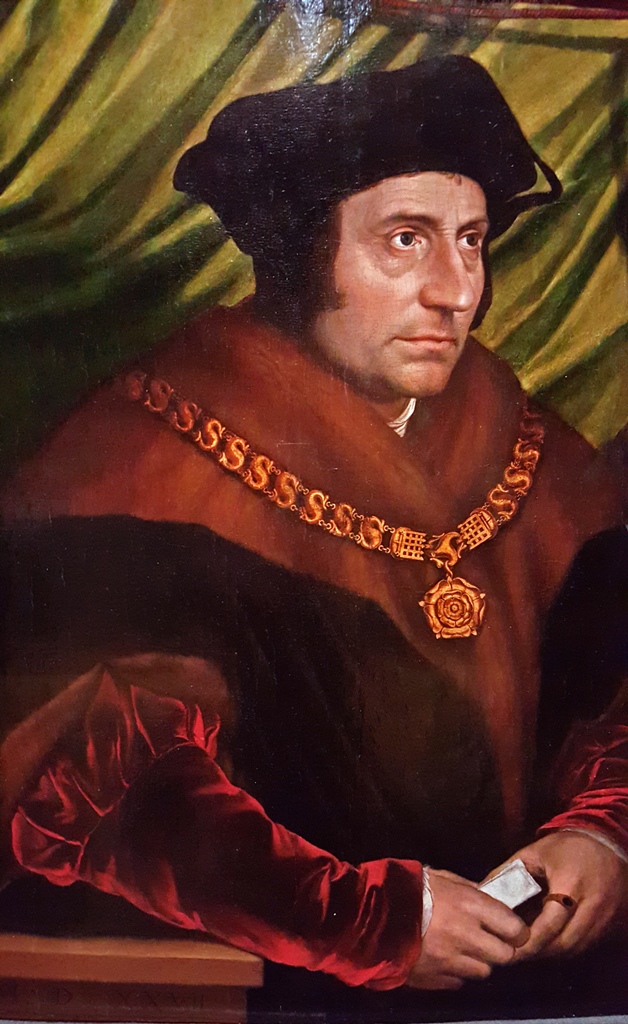
Sir Thomas More (1527), After Hans Holbein the Younger (ca. 1710)
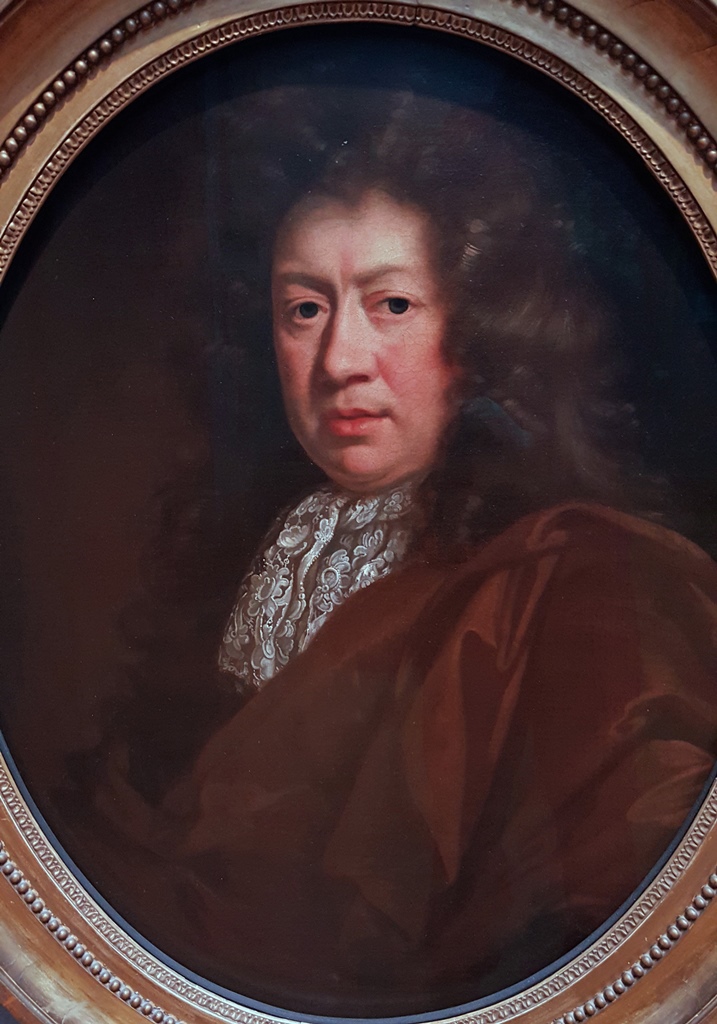
Samuel Pepys, John Closterman (ca. 1690)
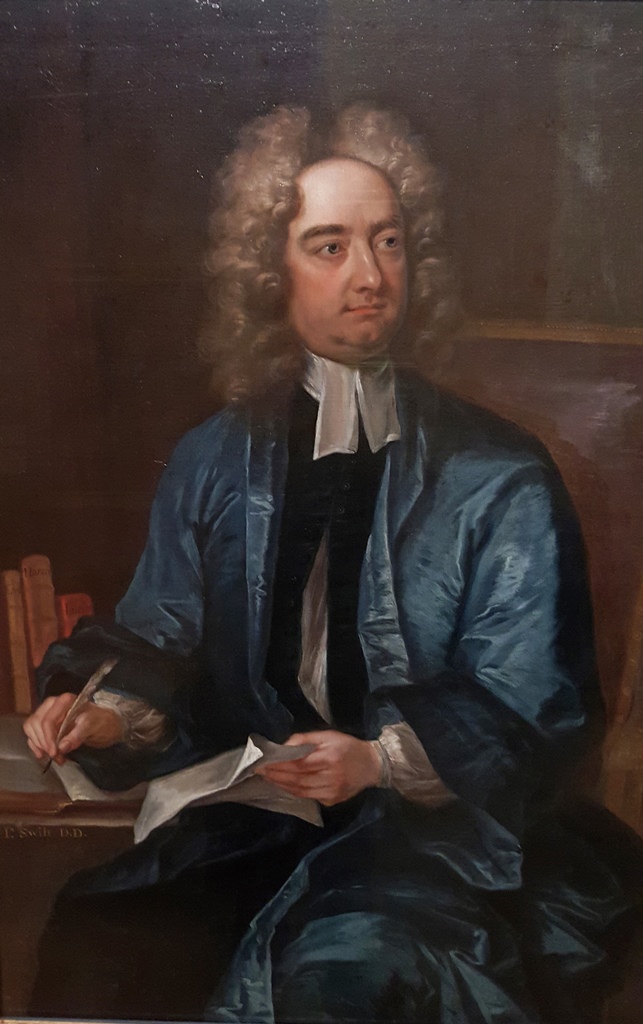
Jonathan Swift, Charles Jervas (ca. 1718)
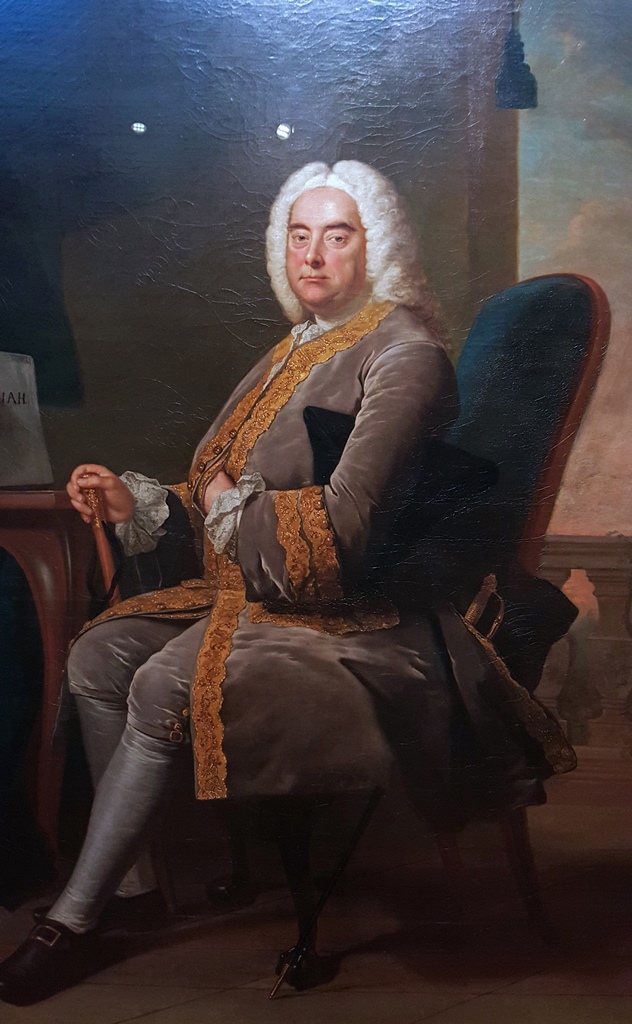
George Frideric Handel, Thomas Hudson (1756)
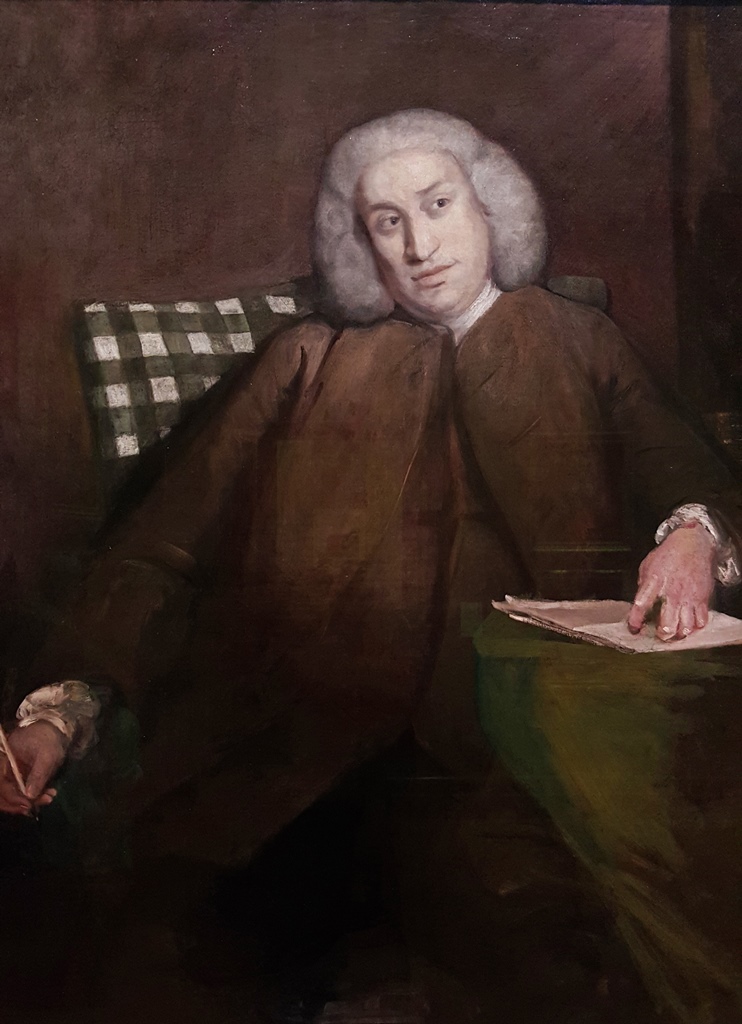
Samuel Johnson, Sir Joshua Reynolds (ca. 1756)
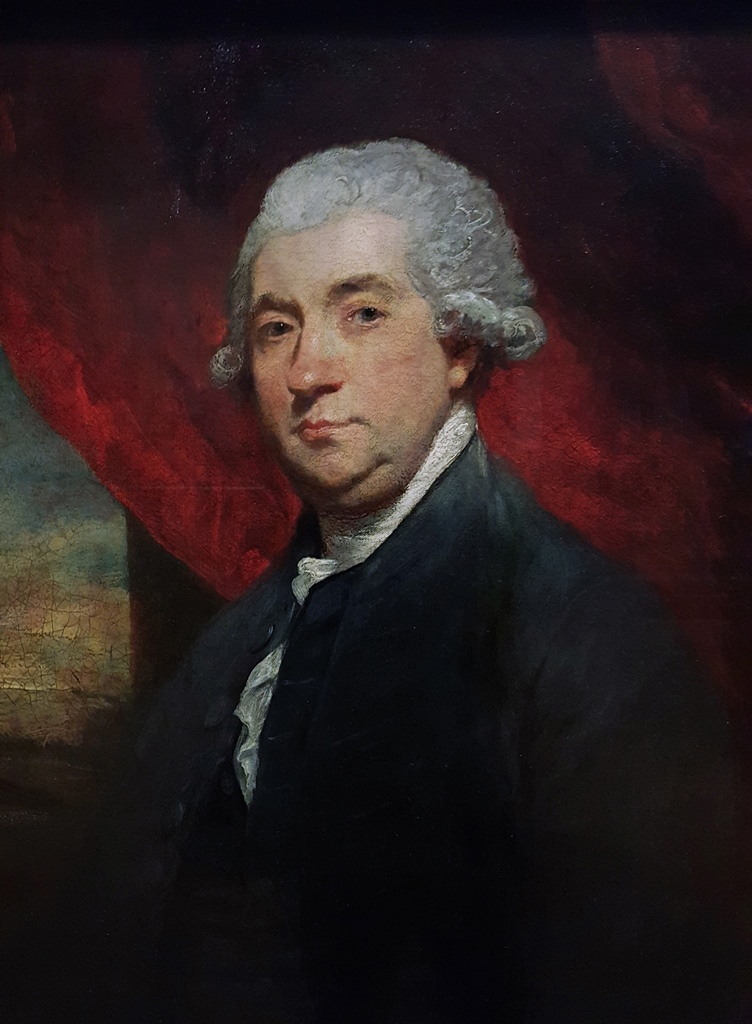
James Boswell, Sir Joshua Reynolds (1785)
-
The Sharp Family – this family, led by William Sharp (a surgeon who worked in George
III's Royal Household), would for a time perform regular concerts from a barge on
the Thames; William (top, with hat raised) lived on the barge with his wife, but they
would be joined by several of his brothers and sisters for the concerts; the family
is probably known mainly because of this painting, which was done by the German
artist Johann Zoffany, known for painting large canvases with lots of people in them
-
Sir Walter Scott (1771-1832) – a writer of novels, poetry, plays and histories; most
well-known for his historical novels, a genre he did much to define; works were
mainly produced during the Romantic period and include titles such as Ivanhoe,
Rob Roy, The Lady of the Lake and Waverley
-
Jane Austen (1775-1817) – stylistically influential writer of six much-loved novels,
including Pride and Prejudice, Sense and Sensibility, Emma and
Mansfield Park; this portrait is a drawing done by her sister Cassandra
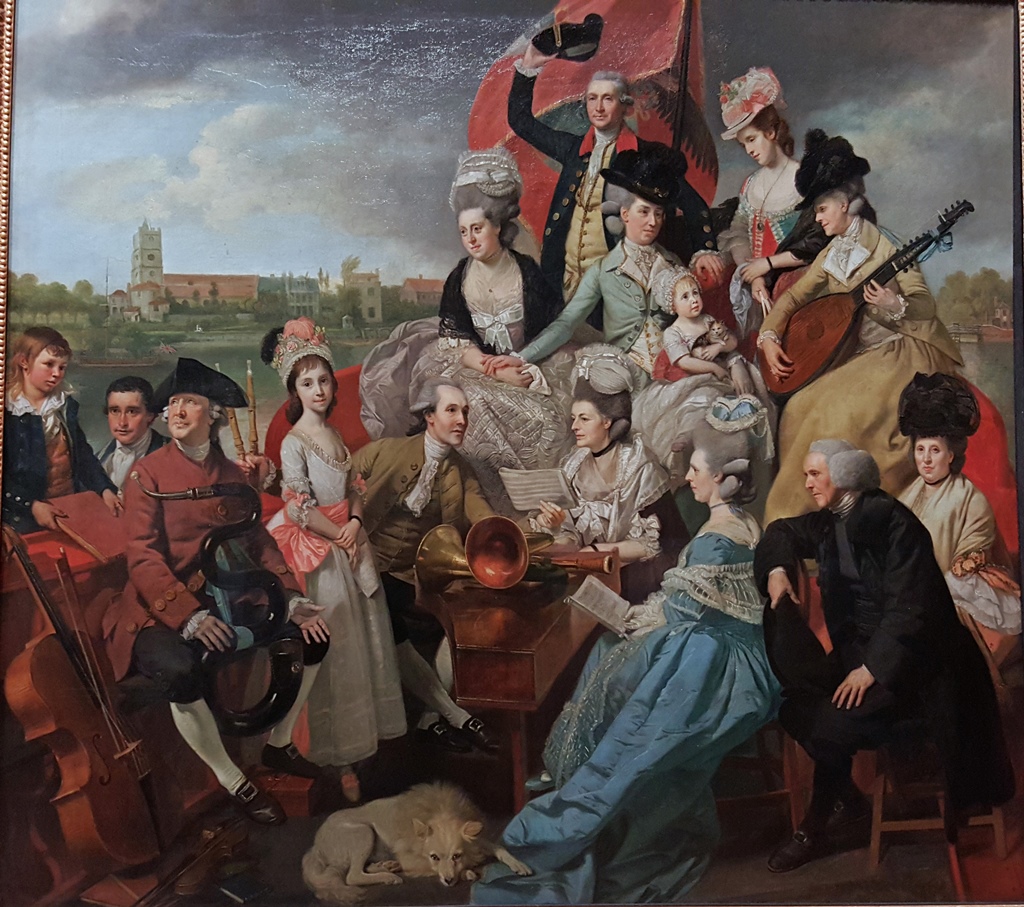
The Sharp Family, Johann Joseph Zoffany (1779-81)
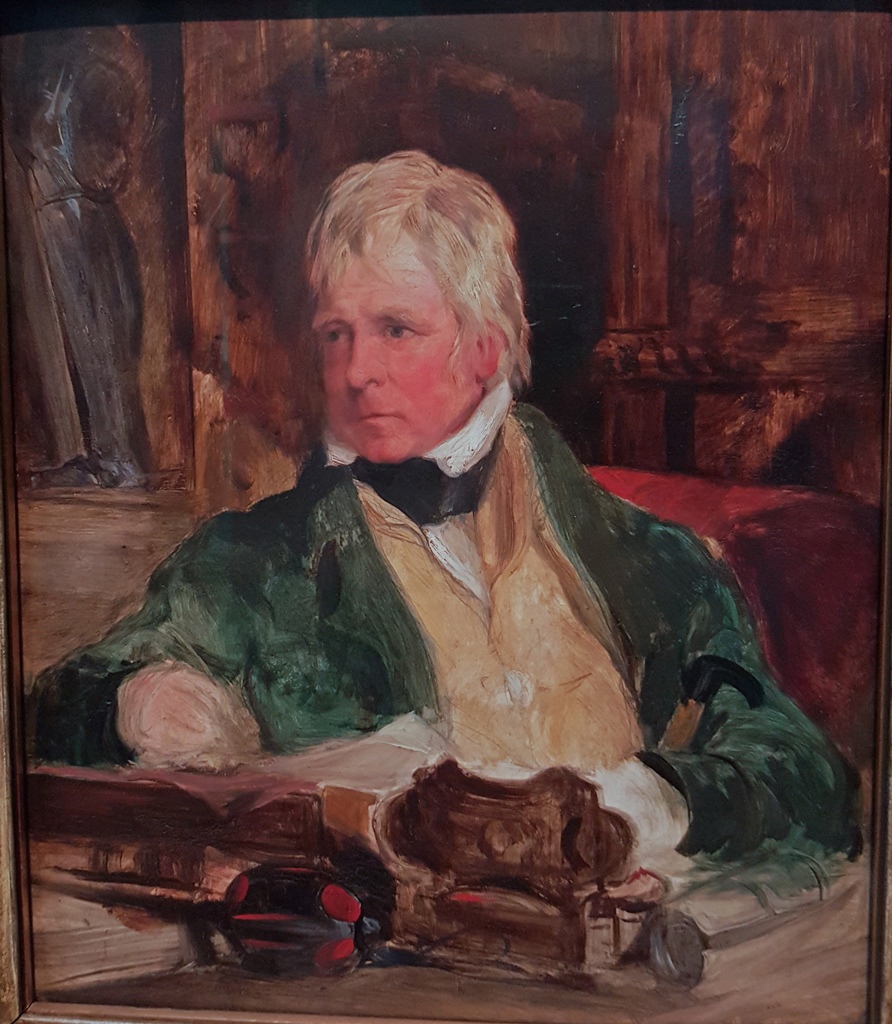
Sir Walter Scott, Sir Edwin Landseer (1824)
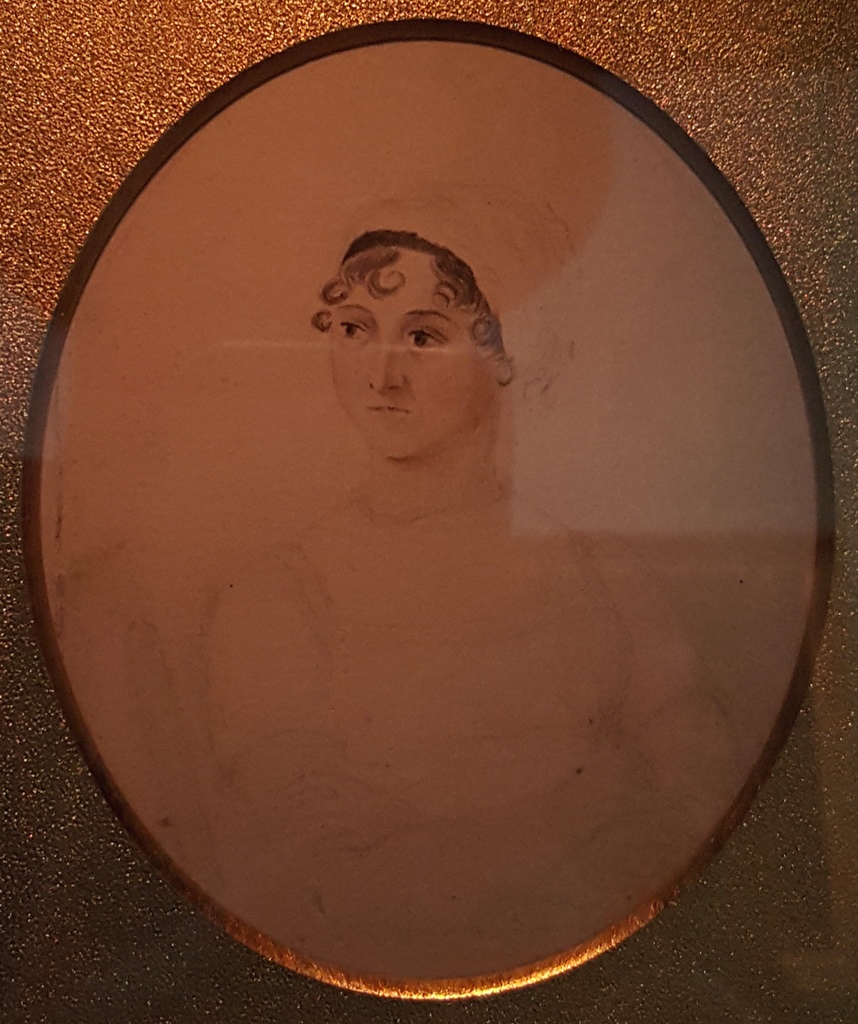
Jane Austen, Cassandra Austen (ca. 1810)
-
George Bernard Shaw (1856-1950) – playwright, critic and political activist; wrote
more than 60 plays, including Man and Superman, Pygmalion and Saint
Joan; early supporter of socialism and Joseph Stalin; received the Nobel Prize
in Literature in 1925 and lived to be 94
-
Beatrix Potter (1866-1943) – writer, illustrator and conservationist; most famous
for writing and illustrating children's books, including The Tale of Peter
Rabbit, The Tale of Squirrel Nutkin, The Tale of Jemima Puddle-Duck
and The Tale of Ginger and Pickles
-
James Joyce (1882-1941) – novelist, short story writer, poet and literary critic,
considered to be one of the most influential authors of the 20th Century; well-known
works include Ulysses, Dubliners, A Portrait of the Artist as a
Young Man and Finnegan's Wake
-
Roald Dahl (1916-90) – novelist, short story writer, poet and screenwriter; most
famous for writing children's books, including Charlie and the Chocolate Factory,
James and the Giant Peach, Matilda, The BFG, and Fantastic Mr.
Fox; served as a fighter pilot for the RAF during World War II
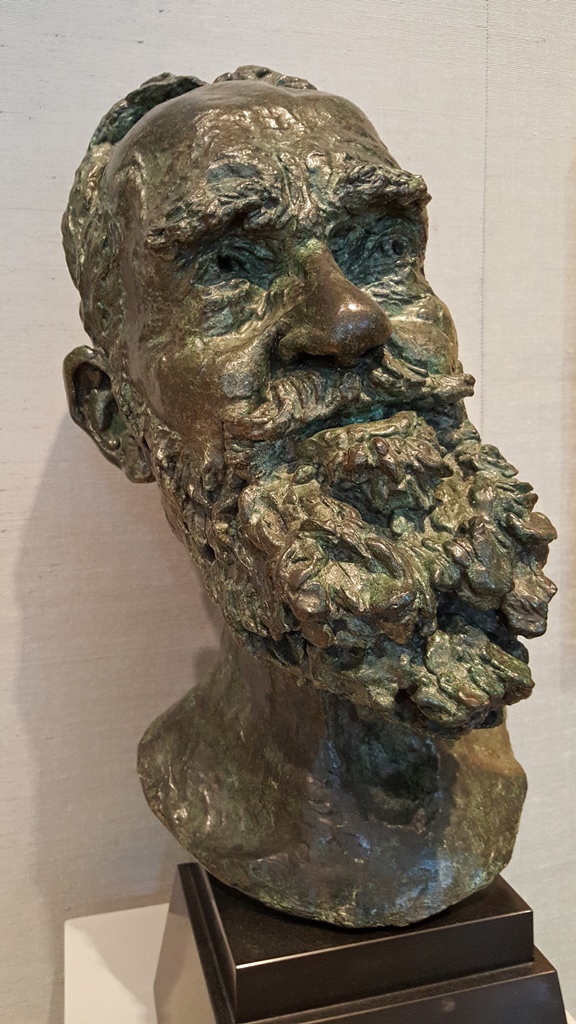
George Bernard Shaw, Sir Jacob Epstein (1934)
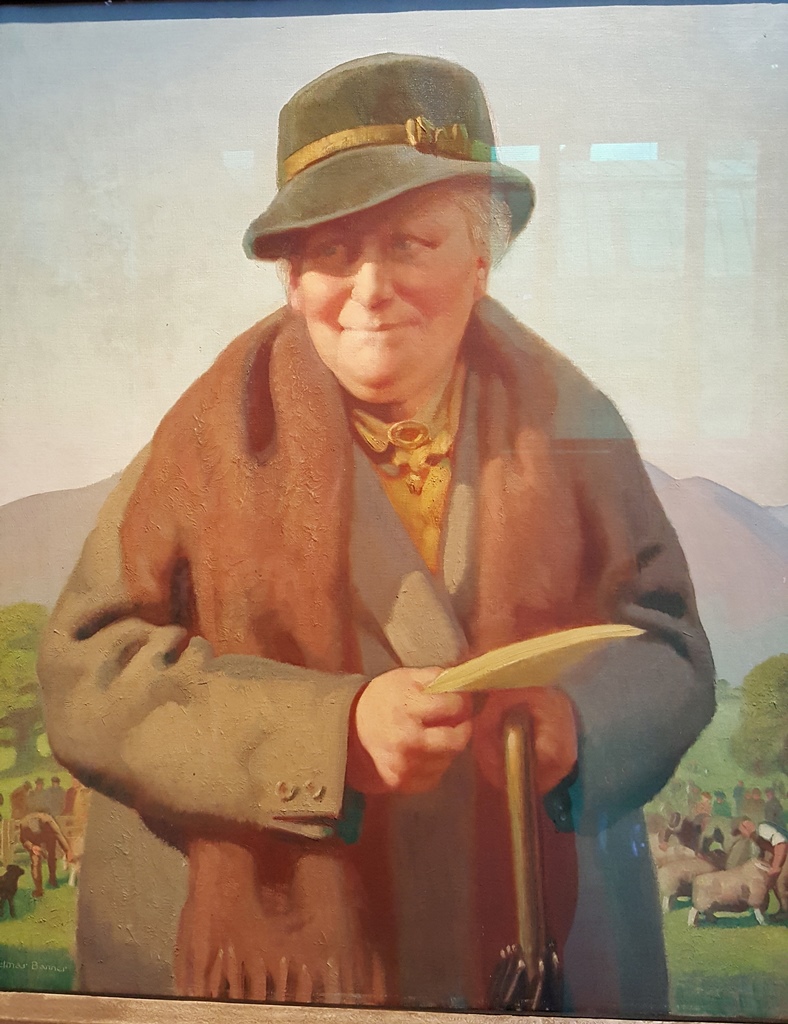
Beatrix Potter, Delmar Banner (1938)
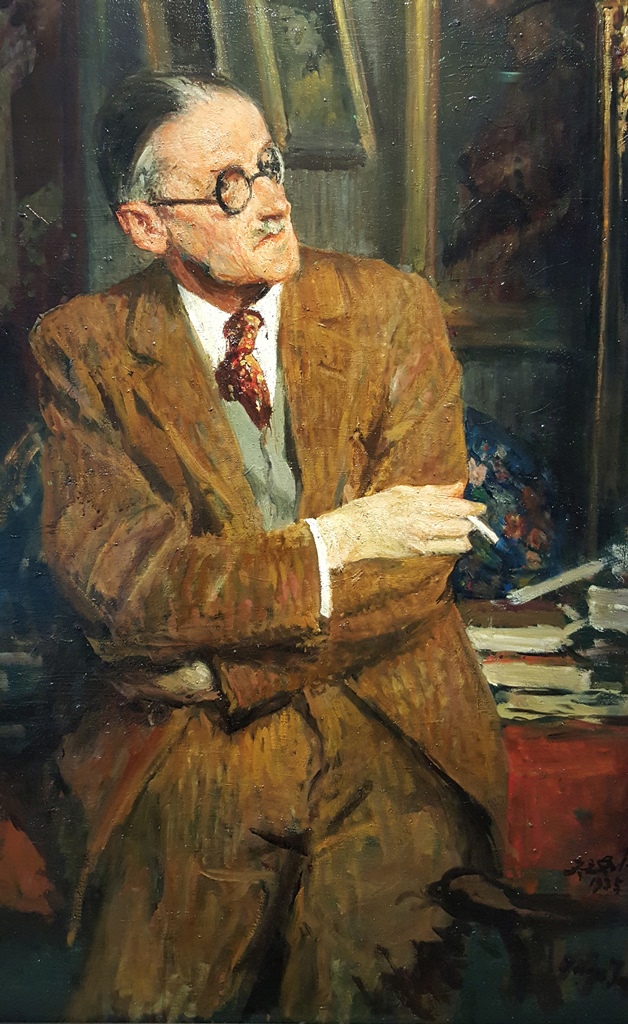
James Joyce, Jacques-Emile Blanche (1935)
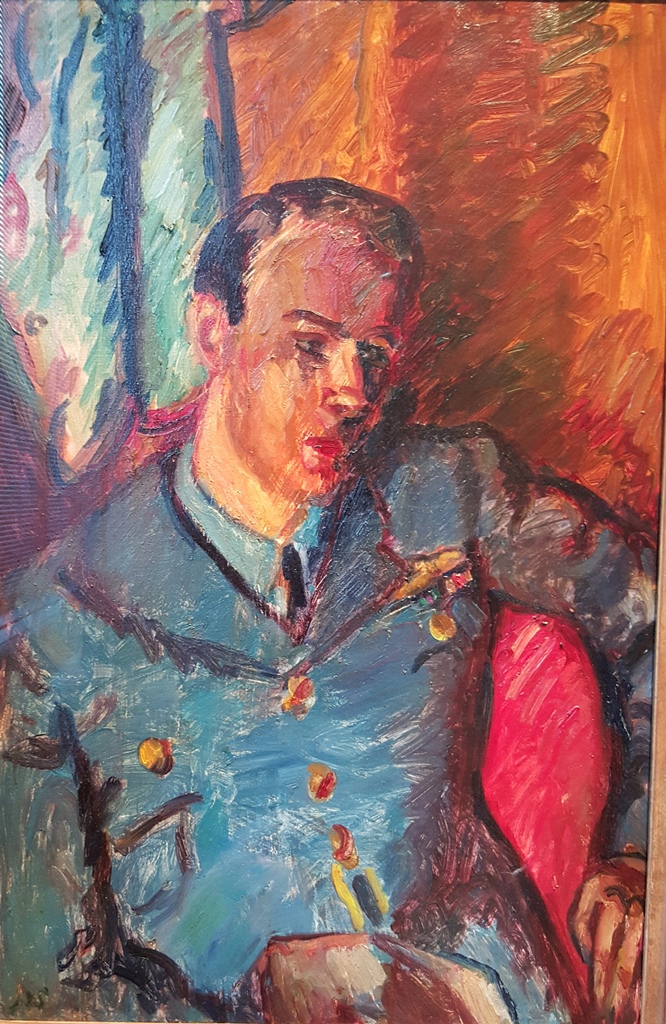
Roald Dahl, Sir Matthew Arnold Bracy Smith (ca. 1944)
At this point we'd finally had it for our first full day in London, and we found an
Underground train that took us back to our hotel. We found some dinner and collapsed
in exhaustion. But there wasn't much rest to be had for the wicked, as we already
had reservations for a bus tour that would take us out of town the next day, starting
early. First stop: Windsor Castle.

